

How to Perform Salah When Travelling
If you are traveling, the following question may arise: How to pray Salah while traveling? It is important to know for Muslims how to pray while travelling because praying is one of the obligatory worship for every Muslim around the world. However, the journey that you take can be long and tiring. Therefore, Almighty Allah has offered us convenience to pray Salah during the travelling.
You can perform Salah while traveling by shortening the rakats from 4 to 2 of Dhuhr, Asr and Ishaa prayers, and you can also combine the dhuhr with Asr, and Maghreb with Isha. If you can not find a proper place to perform the prayer, you can pray in a sitting position, and make Tayamum instead of Wudu with Water, if there is no access to water or place to make Wudu.

When a person leaves his place of residence for any reason and travels somewhere, it is called Safar in Arabic. The person who sets off in his way is called a traveller (musafir). However, there are certain conditions in order to be considered a passenger in the religion of Islam. Knowing these conditions before traveling is very important to know how to pray Salah while traveling.
In Islam, there is a certain distance to be counted as a traveler (musafir). Accordingly, you can combine some prayers together while traveling, or you can perform prayers on the plane or bus.
What Is The Distance for Travel Prayer?
There is no precise definition of the distance that constitutes ‘travel’ in the Qur’an and the Sunnah. For this reason, scholars have reached an answer by examining the practice of the Prophet and Ahl as-Sunnah on this matter..
There are two important views regarding travel distance. According to the view of Shafi, Maliki and Hanbali schools, travel to shorten prayers should be a two-day journey with a medium walk or journey with two stays and heavy loads on foot. According to the view of the Hanafi school, it should be a three-day journey.
In later periods, scholars of Islam converted the three-day period to hours. Considering the short days of the year, they set a total of 18 hours for three days, with an average of 6 hours per day for normal walks. Later, the calculation has changed from hours to kilometers, and it has calculated that a person could walk a distance of about 80 km (48 miles) in 18 hours on foot or by camel. Therefore, the minimum distance for traveler’s prayer is 42 miles ( 80 km).
In this case, if you are thinking of going on a journey and wondering how to pray Salah during the traveling and whether you are counted as a passenger, the journey should be at least 42 miles (80 km).
How Many Rakats to Pray When Travelling?
If your journey provides the necessary distance to be considered as a traveler in Islam, it is important to know how many rakats you need pray while traveling and how to shorten prayers while travelling. Muslims especially wonder what is the ruling on shortening the Salah when travelling. They are asking that if they are gone for an extended period of time, how long can they offer the shortened prayer for?
It is certainly acceptable that the salah, specifically the fard rakats of Dhuhr, Asr, and Isha are reduced from four rakats to two rakats. Therefore, it is permissible to perform these daily prayers as two rakats while traveling. The shortening of the prayer is mentioned directly in the Qur’an as well as a sunnah confirmed by the Prophet Muhammad (ﷺ). It is stated as follows in Surah an-Nisa:
‘ ‘When you travel throughout the land, there is no blame on you if you shorten the Prayer, (especially) if you fear that the unbelievers might cause you harm. Surely the unbelievers are your open enemies.” (Surah An-Nisa, Ayat 101)
When you read this verse, you might think that it is permissible to shorten the prayer only while traveling and when there is a threat or danger to your life. But what if you travel and there is no danger?
It was narrated that Ya’la bin Umayyah (RA) said: “I said to ‘Umar bin Al-Khattab: ‘There is no sin on you if you shorten salah and if you fear that the disbelievers may put you in trial (attack you). But now the people are safe.’ ‘Umar said: ‘I wondered the same thing, so I asked the Messenger of Allah (peace be upon him) about that and he said: This is a favor from Allah to you, so accept His favor.” ( Sahih (Darussalam) Sunan an-Nasa’i)
Therefore, Islamic scholars state that it is permissible to shorten the prayer when there is fear and danger. Thus, Almighty Allah provides convenience to His servants during the traveling. Shortening the prayer on safe journeys is considered as a Sadaka. Almighty Allah’s Sadaka should not be rejected.
The number of Rakats while traveling
It was narrated that Omar said: ” The prayer while traveling is two Rakats, and Friday is two Rakats, and Eid is two Rakats. They are complete and are not shortened, as told by Muhammad (ﷺ). ” (Sunan Ibn Majah)
According to this, the Fards of Dhuhr, Asr and Isha reduced to 2 Rakat. The traveler has the freedom to choose to pray Sunnah and Nafl. It is recommended to pray only Fard Prayers during the traveling. Once you have settled to pray Sunnah and Nafl Rakats. Here are the number of Rakats while traveling:
- Fajr: 2 Rakat of Fard
- Dhuhr: 2 Rakat of Fard
- Asr: 2 Rakat of Fard
- Maghrib: 3 Rakat of Fard
- Isha: 2 Rakat of Fard
Can You Pray Before Time While Traveling?
All schools of Islam agree that any given prayer cannot be performed before its stipulated time. For this reason, it is not possible to perform the prayer if the time for the daily prayer has not yet come before you go on a journey.
However If you are going on a journey that takes 42 miles (80 km) or more, you can combine certain prayers during the traveling. In this case, the prayer is performed by combining one of the daily prayers with another, Dhuhr with Asr, and Maghreb with Isha.
Can You Pray Asr Before Its Time?
Allah says in Surah an-Nisa: “Verily, As-Salaah (the prayer) is enjoined on the believers at fixed hours” (Surah An-Nisa, Ayat 103) As it is stated in the Ayat, each Salah should be performed at its own time, which means, prayer offered before its time is not valid.
Even if you go on a journey that takes at least 42 miles (80 km), it is not permissible to perform the daily prayer before its own time comes. However, Allah has made it possible for those who are regarded as passengers to combine their certain daily prayers while traveling.
Can You Combine Prayers When Travelling?
Each prayer is obligatory to be performed in its own time. Therefore, every prayer should be performed on time under normal conditions. However, if there is a valid excuse, the prayers can be performed by combining them. One of these situations is combining certain prayers while traveling.
According to the view of Hanafi, only a person who is on Hajj can combine two prayers. According to other Islamic schools, two different daily prayers can be combined during the journey. That means, it is permissible to combine Dhuhr and Asr prayers, and Maghrib and Isha for the one who is traveling. However, it should be remembered that only Dhuhr can be combined with Asr and Maghrib with Isha.

Can I Pray Maghrib and Isha Together When Travelling?
The other question about how to perform prayers during a journey is that if we can pray Dhuhr and Asr together while traveling. If you are traveling or have an important excuse, you can combine the Dhuhr and Asr prayers. The person who will perform the prayers by combining them performs these prayers one after the other and in order. He does not perform the Sunnah Prayers between two Fards and does not engage in anything else.
As a conclusion, it can be performed by combining Dhuhr and Asr during the journey. In this case, the 3 rakats Fard of Maghrib and 2 rakats Isha prayers can be combined in time of Maghrib or Isha.
InshAllah this clears up any confusion you may have had. Please leave a comment below if this helped or if you believe we have made a mistake anywhere.

Special Events
Salah During Travel (Qasr)
Praying 5 times a day is an obligation upon Muslims. However, Allah has allowed His servants to shorten their Salah during travel.
1- Why Should We Follow Qasr Salah During Travel?
The Messenger of Allah (S.A.W.) said,
“Verily, Allah loves for you to take His concessions , just as he dislikes you to be disobedient.” (Musnad Ahmad: 5832)
The shortening of prayers is mentioned in the Quran and is a confirmed Sunnah of Prophet Muhammad (S.A.W.):
“And when you travel throughout the land, there is no blame upon you for the shortening Prayer” (Quran 4:101, An-Nasai: 457)
Hence, for travelers, it is permissible to shorten those Prayers that consist of 4 Rakat to only 2 Rakat (i.e. only Fardh Prayer of Dhuhr, Asr & Isha Salah).
2- Opinion of Different Fiqh:
According to Imam Shafii (R.A.) and Imam Ahmad bin Hanbal (R.A.), Reduction in the Prayer is not obligatory but merely optional. However, it is better to shorten it.
Imam Abu Hanifah (R.A.) considers ‘Reduction in Prayer'’ as obligatory (Wajib) during travel .
3- Conditions for Qasr:
Travelling Distance
According to Imam Abu Hanifa, the minimum required distance for a person to be considered a traveler is when he or she intends to travel for 48 miles (80 kilometers approx) from his/her Waṭan-e-Aṣli (Original Hometown).
Imam Shafi'i, Imam Ahmad bin Hanbal and Imam Malik fixed this distance at 55 miles approx (88 km approx).
Shortening of the prayers commences once a person leaves the city limits and ceases when they re-enter the city limits.
Period/Time
There is considerable scholarly disagreement on this matter from three days to four and to fifteen days.
Traveler-status is the intention to stay at the place of arrival for a period of:
Less than Fifteen (15) days [Hanafi]
Less than Four (4) days [Hanbali, Maliki and Shafii] - (Days of arrival and departure are not included)
4- How to do Taqseer (shortening of Prayers):
During travel, only Salah with 4 Rakat Fardh is to be shortened, i.e. Dhuhr, Asr & Isha. Travelers should offer 2 Rakat instead of 4 Rakat of the mentioned Salahs.
However, 2 Rakat Fardh of Fajr and 3 Rakat of Maghrib Salah must be offered in full as you cannot cut 2 or 3 Rakat Fardh Salah in half.
When on a journey, the Prophet (S.A.W.) used to offer, without fail, 2 Sunnah Rakat of Fajr Prayer and 3 Rakat Witr with Isha Prayer . So these two should be offered even during traveling.
Remember that these rules are only for a person who is traveling and offering individual Salah. If the traveler is praying in congregation then he must follow the Imam and offer the full Salah.
The Quran, written centuries ago, contains profound hints at future discoveries. It includes scientific facts that surpass the knowledge of anyone who lived in the 7th century. This serves as compelling evidence of the divine nature of the Quran.
This year, Nisf Shaban (Shab-e-Barat) will start after the sunset of Tuesday, March 7th, 2023.
Isra wal Meraj is a journey of faith and revelation that the Prophet Muhammad (S.A.W.) took from Makkah to Jerusalem and then to the 7th Heaven.
Isra and Miraj (The Night Journey) is miraculous journey that Prophet Muhammad (S.A.W.) took in one night from Makkah to Bait al-Maqdas and then an ascension to the heavens.
* user name and email shouldn't be left empty

- en العربية ar English en Español es Français fr Indonesian id Portuguese pt Türkçe tr اردو ur
How to Combine Maghrib and `Isha’ Prayers when Travelling
Publication : 02-03-2023
Views : 29671
I was travelling and I wanted to join Maghrib and `Isha’ together. I reached the area where I live at the time of `Isha’, so I prayed `Isha’ with them, then I prayed Maghrib. Is what I did correct or not?
What are the conditions for putting prayers together when travelling?
Summary of answer
Contents Related
Conditions of combining prayers when travelling
How to combine maghrib and `isha; prayer when travelling.
Praise be to Allah.
It is permissible for the traveller to put prayers together according to the following conditions:
· The distance [of his journey] should be the distance at which it becomes permissible to shorten prayers , which is approximately 80 km according to the majority of scholars. Some of the scholars are of the view that the distance that counts as travel is not defined by a specific distance; rather it is the matter of custom [and what is customarily regarded as travel].
· According to the majority of scholars, it is stipulated that the travel should be for a permissible purpose. So if someone travels in order to rob people (banditry) or to commit immoral actions or other sins, it is not permissible for him to avail himself of the concession of the traveller. However, that was not stipulated by Abu Hanifah (may Allah have mercy on him). See: Al-Mawsu`ah Al-Fiqhiyyah (27/276).
· He should intend to stay for four days or less. If he intends to stay for longer than that, he cannot avail himself of the concessions of travel, such as not fasting in Ramadan and shortening prayers and putting them together.
The scholars of the Permanent Committee for Ifta’ said:
If he intends to stay for more than four days, then it is not permissible for him to avail himself of the concessions of travel, such as joining prayers together and shortening them, and the like. But if he intends to stay for four days or less than four days, or his journey depends on completing his errands, so when he has completed his errands he will leave, and he has not already decided on the length of stay that would allow him to avail himself of the concessions of travel, then it is permissible for him to avail himself of the concessions of travel."( Fatawa Al-Lajnah Ad-Da’imah 8/113-114)
· He should not begin to avail himself of the concessions of travel until he has left his city.
See: Al-Mawsu`ah Al-Fiqhiyyah (27/279).
· The majority of scholars stipulated that he should do the two prayers consecutively when he joins them together at the time of the earlier prayer, so he should not leave a long gap between the two prayers.
Shaykh Al-Islam Ibn Taymiyah (may Allah have mercy on him) favoured the view that that is not a condition. See: Majmu` Al-Fatawa (24/54).
· It is stipulated that the two prayers that are joined together should be done in the correct order. This is the view of the majority.
The scholars of the Permanent Committee for Ifta’ said:
“When joining prayers together , it is obligatory to do them in the correct order, so that [the traveller] prays Thuhr first, then prays `Asr , and he prays Maghrib first, then prays `Isha’ , whether he is joining them together at the time of the earlier or later prayer." ( Fatawa Al-Lajnah Ad-Da’imah 8/139)
Shaykh Ibn ‘Uthaymin (may Allah have mercy on him) said:
“It is stipulated that the prayers be done in the correct order, starting with the first one and then the second, because the Prophet (blessings and peace of Allah be upon him) said: “Pray as you have seen me pray.” And because Islamic teachings have explained the order of the times of prayer. But if the person forgets, or is unaware of the ruling, or comes to some people who are praying `Isha’, and he intended to put the prayers together at the time of the later prayer, then he prays `Isha’ with them, then he prays Maghrib, is the requirement to offer the prayers in the correct order waived in this case, or not?
The most well-known view among our jurists (may Allah have mercy on them) is that it is not waived. Based on that, if someone did the second prayer before the first prayer by mistake, or out of ignorance, or to join the congregation, or for other reasons, then his joining the prayers together is not valid. So what must he do in this case?
The answer is: the prayer that he offered first is not valid as an obligatory prayer, and he has to repeat it.
For example: a man was intending to join the prayers together at the time of the later prayer, then he entered the mosque and found some people praying `Isha’, so he joined them with the intention of praying `Isha’, then when he had finished `Isha’ he prayed Maghrib. We say: His `Isha’ prayer is not valid, because he offered it before Maghrib, and offering the prayers in the correct order is a condition [of prayer being valid]. So he has to pray `Isha’ again, but his Maghrib is valid. When we say that it is not valid, we mean that it is not valid as an obligatory prayer that would fulfil the obligation, but it is regarded as a supererogatory prayer for which he will be rewarded." (A sh-Sharh Al-Mumti ` 4/401-402)
And Allah knows best.
Was this answer helpful? No Yes
Source: Islam Q&A
Similar Topics
Doing one prayer straight after the other when combining two prayers
Minimum Distance for Breaking Fast and Shortening Prayers
Is Combining Prayers when Travelling Permissible?
The difference between joining and shortening prayers
Can You Pray Dhuhr and Asr Together?
share Question
You can ask your question on the website via this link: https://islamqa.info/en/ask
Log in Create an account
Password should contain small, capital letter and at least 8 characters long
Can't log in to your account?
If you do not have an account, you can click the button below to create one
If you have an account, log in
Create new account Log in
Reset Username or Password
Send feedback.
IslamKaZikr
How Muslims Should Perform Salah During Traveling?
In this article, we will discuss how muslims should perform salah during travelling and what steps they can take to ensure that their prayers are following islamic teachings..
by Dur-e-Sabih
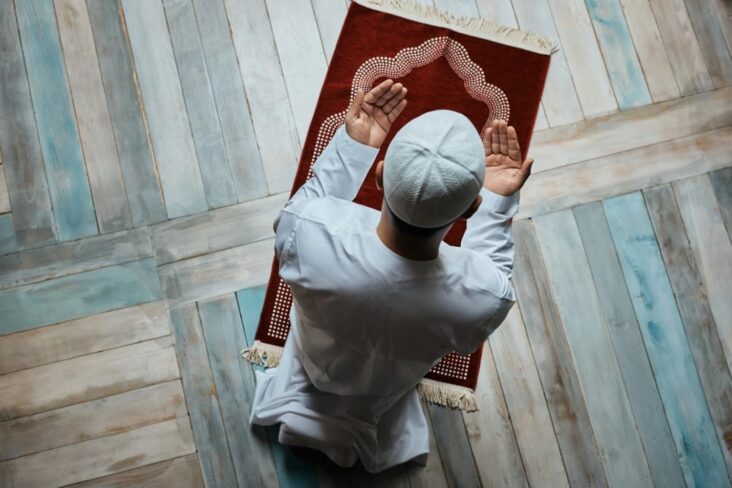
Prayer is one of the most essential and central practices in Islam, and it is a means of connecting with Allah (God) and gaining spiritual strength. However, for Muslims who are traveling, the regular practice of Salah can be disrupted for various reasons. Like changes in the time of prayer, difficulties finding a suitable place to pray, and travel stress.
Despite these challenges, Muslims are still required to perform Salah and maintain their connection with Allah while on the road. Well, fret not; in this article, we will discuss how Muslims should perform Salah during travel and what steps they can take to ensure that their prayers are following Islamic teachings. So, let’s get started.
5 Things to Remember When Performing Salah While Traveling
Here are five things you can do to perform a prayer when on a journey and can’t find a suitable place or time to pray.
1. Reducing the Number of Rakats
When traveling, Muslims can shorten their Salah from the usual four Rak’ahs to two Rak’ahs for the Dhuhr, Asr, and Isha prayers. This is known as “Qasr” (shortening) and is considered a concession for travelers to perform Salah while on a journey away from home.
Narrated Yahya bin ‘Is-haq:
I heard Anas saying, “We traveled with the Prophet (ﷺ) from Medina to Mecca and offered two rak`at (for every prayer) till we returned to Medina.” I said, “Did you stay for a while in Mecca?” He replied, “We stayed in Mecca for ten days.” – Sahih al-Bukhari 1081 googletag.cmd.push(function() { googletag.display('div-gpt-ad-1660033977945-0'); }); ” title="Advertise and Market to Muslims" target="_blank">Ads by Muslim Ad Network
This ruling is based on the idea that travel can be physically and mentally demanding. Thus, reducing the number of Rakats makes it easier for travelers to maintain their Salah practice while on the road.
Following this, the Fards (Farz) of Dhuhr, Asr, and Isha were reduced to two Rakats. There is no restriction on the traveler’s choice of praying Sunnah or Nafl. While traveling, it is advised that you pray only the Fard (Farz) Prayers.
Here are the number of Rakats you can n pray for each prayer while traveling:
- Fajr: 2 FarzRakats
- Dhuhr: 2 FarzRakats
- Asr: 2 FarzRakats
- Maghrib: 3 FarzRakats
- Isha: 2 FarzRakts
2. Making Up Missed Prayers
If a traveler misses any of the prayers while on the road, they should make them up by combining the missed prayers with the next prayer. For example, if the traveler misses the Dhuhr prayer, they can make it up by combining it with the Asr prayer when the time for Asr arrives.
Remember that this rule only applies to travelers and that non-travelers should perform missed prayers as soon as possible and separately from the next prayer.
Always make dua (pray) to Allah to make your journey safer and fulfill the purpose of the journey with ease. There are many Duas for traveling in Islam that you say before starting the journey and some after you reach the destination. Memorize each so you can remember which to say at what time.
Related: How to improve your Salah
3. Joining Two Prayers
Another concession for travelers is the ability to combine two prayers. When traveling, Muslims may combine the Dhuhr and Asr prayers and the Maghrib and Isha prayers if they are afraid of missing the time for either of them or are concerned about their safety.
The traveler may perform both prayers at the time of Dhuhr if both are due at noon and Asr is due mid-afternoon.
This way, they can fulfill their obligation to perform both prayers and avoid the difficulties of finding a suitable place to pray at different times during their journey.
4. Facing the Direction of Mecca
When performing Salah, travelers should face Mecca’s direction, known as “Qiblah.” This is a fundamental aspect of Salah and is considered a symbol of the unity of the Muslim community.
If it is impossible to face Mecca, such as when a traveler is on a ship or in a plane, they should meet in the direction of the nearest place where they can face Mecca. In these cases, the traveler should use their best judgment and try to face Mecca as closely as possible.
Many mobile apps can give you the direction of Qiblah anywhere in the world. So, install one of these on your phone if you are going on a long journey and have difficulty finding Qiblah.
5. Performing Wudu (Ablution)
Before performing Salah, travelers must perform Wudu to cleanse their bodies from filth and prepare for prayer. Wudu is a compulsory part of Salah, and there are specific guidelines for performing it, but for travelers, these guidelines are different.
Mainly water is used for performing Wudu in daily routine, but for travelers, this can be a problem, and sometimes water is unavailable.
Travelers may perform Tayammum, a dry purification using earth or dust if water is unavailable. In either case, travelers need to ensure they have Wudu or Tayammum before they pray.
Related: What Dua to read after wudu
What Do different Schools of Thought Say About Performing Salah During Traveling?
Now that you understand how to perform prayer while traveling let’s look at some schools of thought on this matter. If you belong to a specific sect and strictly follow its guidelines, you must know what your sect permits.
Hanafi : Hanafi thought emphasizes the importance of reducing the number of Rak’ahs during travel and allows travelers to shorten their prayers to two Rak’ahs. They also allow for the combination of two prayers.
Maliki : Maliki thought also permits travelers to shorten their prayers to two Rak’ahs. Although, they do not allow combining the two prayers without a legitimate reason.
Shafi’i : The Shafi school of thought also allows travelers to shorten their prayers to two Rak’ahs and to combine two prayers if they miss one of the prayers if they are performed separately.
Hanbali : Hanbali thought also permits travelers to shorten their prayers to two Rak’ahs, but they do not allow combining two prayers unless there is a legitimate reason, such as fear for safety.
Performing Salah is one of the five pillars of Islam and is of utmost importance in a Muslim’s daily life. Considering the importance of Salah in Islam , while traveling it is crucial to adhere to the guidelines and rules set by Islam to ensure that the Salah is performed correctly and by the Sunnah of the Prophet Muhammad (PBUH)
The flexibility provided by Islam in performing Salah while traveling makes it easier for Muslims to maintain their daily worship even when they are on the move. To continue fulfilling Salah duty without any hindrance, Muslims need to be aware of the rules and guidelines for performing Salah while traveling.
With the right intention and commitment, the performance of Salah while traveling can be a fulfilling and rewarding experience for every Muslim.
Written by Dur-e-Sabih
Dur-e-Sabih has an educational background in Accountancy helps her in tackling topics ranging from career and business productivity to web development, finance, and digital marketing.

Morning and Evening Adhkar – Benefits & Etiquettes

Avoid This Major Sin During Wudu!
Ⓒ IslamKaZikr 2023 – Website & SEO By Rankvidya - Digital Marketing Solutions
Add to Collection
Public collection title
Private collection title
No Collections
Here you'll find all collections you've created before.

Don’t miss the chance to download the most powerful Duas for mercy from Qur'an.
No thanks, I’m not interested!

- date converter
- Ramadan Imsakiah 2024
- Dua (azkar)
- أسمى الله أل حسنى
- God bless Al Hosna
- Zakat Calculator
- Popular Islamic videos
- Muslim Sadiq shop
- Download the application
Welcome to PrayerTimes Site
Best Source for the Most Accurate Athan and Prayer Times Discover More
# Azan Times # Prayer Times # x
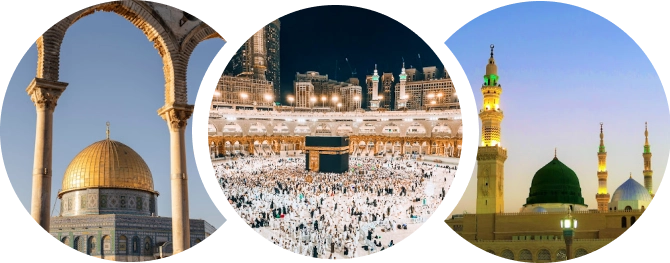
How to perform Isha Prayer: Discover the Ultimate Guide to Perfecting Your Isha Prayer!
Understanding how to perform the Isha Prayer can be difficult, particularly for new converts. Isha, one of the five daily prayers required by Islam, is filled with significant rituals and recitations that require precision.
This blog will take you through each step of correctly and reverently performing this prayer, making it easier.
Are you ready to become an excellent worshipper? Let’s get started!
Understanding Isha Prayer

Salat al Isha , the last of Islam’s five daily prayers, is unique among all other Salah Times. According to Islamic tradition, it is performed after the twilight has passed. It is governed by several rules to ensure proper execution.
Niyyah, or intention, marks the start of this prayer, which requires your heartfelt commitment to pray Isha for the sake of Allah SWT.
This prayer is divided into three sections: four rak’aats Fard , two rak’aats Sunnah , and three rak’aats Witr. Al-Fatiha Surah is recited in every rak’aat.
Interestingly, there are some gender differences; females should recite in a soft voice, whereas males must recite aloud during Fajr, Maghrib, and the Isha prayers.
Understanding each step enhances our Salat experience and brings us closer to effectively fulfilling our religious obligations.
Steps to Perform Isha Prayer

To perform the Isha Prayer, start by performing the four Rak’aats Fard part, and then complete the two Rak’aats Sunnah part.
Executing the Four Rak’aats Fard Part
This essential part of Salat al Isha is vital in completing your daily prayers.
Intention and Dua of Istiftah:
The step is initiated by making a new Niyyah (Intention) for offering the Fard of Isha prayer. Following this declaration of intention, you recite “Takbir” and then begin uttering “‘SubhanakAllahumma, wa bihamdika tabarakasmuka wa ta’ala jadduka wa la ilaha ghairuk. ” Sunan an-Nasa’i 900
Surah Fatiha

Then comes the recitation of Surah Al-Fatiha and another Quranic Surah, such as Surah An-Nas, or any other chapter from the Holy Quran other than Al-Fatiha. Book 2, Hadith 172 , Sahih Muslim 396c
Remember to recite these parts quietly if you’re a female, while males recite them aloud during this late-night prayer session.
Bowing (Ruku) and Qawmah (Rising from bowing)
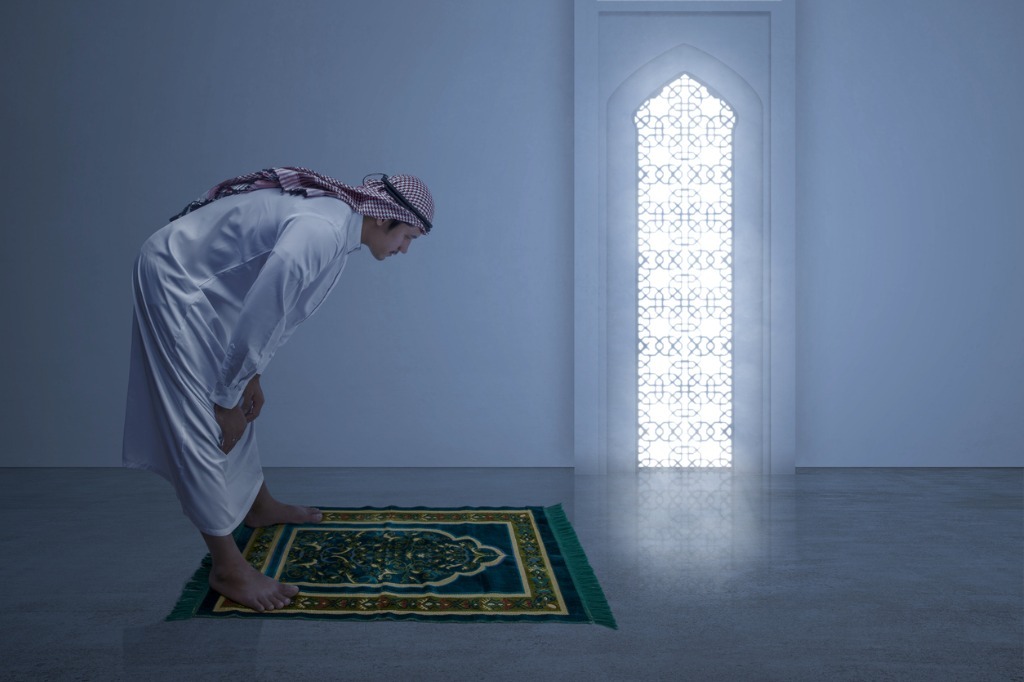
When going into ruku, say “Allahu Akbar”, then recite “Subhana Rabbi Al Adheem” 1 at least thrice. Now rise from ruku while saying “Sami Allahu Liman Hamidah” 2, then say “Rabbana Walakal Hamd.” 3
Prostration (Sajda)

Go into the prostration by saying “Allahu Akbar,” and during the prostration, recite “Subhana Rabbi Al A’la” 4 at least thrice. Rise from this position and sit. Each time you go into prostration and rise from it, you will say “Allahu Akbar.”
Jalsa (sitting between two prostrations)

After performing one sajda, sit and relax. This gap between the first and second prostration is known as Jalsah. You may recite “Rabbighfirli” 5 During it. Now perform the second prostration, and after that, stand up for the second Rakah.
Reciting Tashahud in Second Rakah

In the second Rakah, after the second prostration, don’t stand up. Instead, recite Tashahud and then stand up. The Third Rakah is the same as the first.
Concluding the Prayer
The Fourth Rakah also resembles the second, but After Tashahud 6, you recite Durood-e-Ibrahimi 7 and the Dua “Allahumma Rabbana atina fid dunya hasanah wa fil akhirati hasanah wa qina ‘adhaban nar” 8 and then you end the prayer by saying Tasleem (Salutation to end the prayer).
References:
- Riyad as-Salihin 1175 ,
- Sunan an-Nasa’i 1072 ,
- Sunan Ibn Majah 877
- Sunan an-Nasa’i 1046
- Sunan Ibn Majah 897
- Sahih al-Bukhari 831 ,
- Sahih al-Bukhari 3370 ,
- Sahih al-Bukhari 4522 .
Carefully maintain focus and proper pronunciation throughout, without rushing through your prayer.
Completing the Two Rak’aats Final Sunnah Part

Following the completion of the four rak’aat Fard portion of the Isha prayer, there are two additional rak’aats known as Sunnah Muakkadah. These rak’aats are significant because they are a voluntary act of worship as well as an opportunity to earn additional rewards from Allah SWT.
During these two rak’aats, it is recommended to recite any chapter from the Holy Quran after Surah Al-Fatiha.
The difference between these two rakaats and the Fard one is in the intention. You end the prayer with taslim instead of standing up in the second Rakah after Tashahud.
These two Sunnah are among the twelve Sunnah mentioned in a hadith by Prophet Muhammad PBUH.
مَنْ ثَابَرَ عَلَى ثِنْتَىْ عَشْرَةَ رَكْعَةً مِنَ السُّنَّةِ بَنَى اللَّهُ لَهُ بَيْتًا فِي الْجَنَّةِ أَرْبَعِ رَكَعَاتٍ قَبْلَ الظُّهْرِ وَرَكْعَتَيْنِ بَعْدَهَا وَرَكْعَتَيْنِ بَعْدَ الْمَغْرِبِ وَرَكْعَتَيْنِ بَعْدَ الْعِشَاءِ وَرَكْعَتَيْنِ قَبْلَ الْفَجْرِ ”
“Whoever is regular with twelve Rak’ah of Sunnah (prayer), Allah will build a house for him in Paradise: Four Rak’ah before Zuhr, two Rak’ah after it, two Rak’ah after Maghrib, two Rak’ah after Isha, and two Rak’ah before Fajr.”
Jami` at-Tirmidhi 414
Performing the Witr
It is the sunnah of the Prophet Muhammad PBUH to pray Witr alongside Tahajjud prayer (the one-third of night prayer). He advised Muslims to pray Witr alongside Isha if they are worried about not being able to wake up at night.
مَنْ خَافَ أَنْ لاَ يَقُومَ مِنْ آخِرِ اللَّيْلِ فَلْيُوتِرْ أَوَّلَهُ
If anyone is afraid that he may not get up in the latter part of the night, he should observe Witr in the first part of it;
Sahih Muslim 755a
In a hadith, Prophet Muhammad PBUH also told us about its number of Rak’aats:
الْوِتْرُ حَقٌّ. فَمَنْ شَاءَ فَلْيُوتِرْ بِخَمْسٍ. وَمَنْ شَاءَ فَلْيُوتِرْ بِثَلاَثٍ. وَمَنْ شَاءَ فَلْيُوتِرْ بِوَاحِدَةٍ ”
“Witr is Haqq.* Whoever wishes let him pray Witr with five (Rak’ah), and whoever wishes let him pray Witr with three (Rak’ah), and whoever wishes let him pray Witr with one (Rak’ah).”
We also understand from some ahadith in which the prophet Muhammad PBUH prayed seven or nine rak’aats of Witr. Sahih Muslim 737a , Sunan an-Nasa’i 1714 . Sunan Ibn Majah 1191
Most Muslims prefer three rak’aats of Witr prayer, similar to three Fard rak’aats of Maghrib but differs slightly. In the third Rakah of the Witr prayer, after we say “sami’a Allahu leman hamedah”, we perform Dua-e-Qunoot.
“ اللَّهُمَّ اهْدِنِي فِيمَنْ هَدَيْتَ وَعَافِنِي فِيمَنْ عَافَيْتَ وَتَوَلَّنِي فِيمَنْ تَوَلَّيْتَ وَبَارِكْ لِي فِيمَا أَعْطَيْتَ وَقِنِي شَرَّ مَا قَضَيْتَ إِنَّكَ تَقْضِي وَلاَ يُقْضَى عَلَيْكَ وَإِنَّهُ لاَ يَذِلُّ مَنْ وَالَيْتَ وَلاَ يَعِزُّ مَنْ عَادَيْتَ تَبَارَكْتَ رَبَّنَا وَتَعَالَيْتَ ”
“O Allah, guide me among those Thou hast guided, grant me security among those Thou hast granted security, take me into Thy charge among those Thou hast taken into Thy charge, bless me in what Thou hast given, guard me from the evil of what Thou hast decreed, for Thou dost decree, and nothing is decreed for Thee. He whom Thou befriendest is not humbled. Blessed and Exalted art Thou, our Lord.”
Sunan Abi Dawud 1425
Tips for Concentration During Isha Prayer
Maintaining focus and concentration during the Isha Prayer can be challenging, especially after a long day. Here are some tips to help you stay focused and connected during this important prayer:
- Find a Quiet Place : Select a peaceful and quiet location where you can pray without distractions. This will contribute to creating a calm environment that will aid in concentration.
- Mentally Prepare : Before beginning your prayer, take a few moments to clear your mind and mentally prepare yourself for the act of worship. Remember the importance of the Isha Prayer and the opportunity to connect with Allah SWT.
- Slow down your pace : Take your time as you complete each part of the prayer. Avoid rushing through your movements and instead, concentrate on being present in every moment.
- Reflect on the Meaning: Try to reflect on the meanings of Surahs and prayer positions as you recite them. Understand spoken words’ meaning and importance in your relationship with Allah SWT.
Common Mistakes to Avoid During Isha Prayer
- Rushing through the prayer without properly performing each position.
- Failure to recite Surah Al-Fatiha during all rak’aats of the Isha Prayer.
- Not fully bending when performing ruku (the bowing position) or touching the forehead to the ground when performing sujood (prostration).
- Allowing thoughts to wander or becoming distracted during prayer breaks concentration.
Performing the Isha Prayer holds great importance. Following the outlined steps and remaining focused during the prayer can establish a deep connection with Allah SWT.
To truly benefit from this beautiful act of worship, ensure that you make sincere intentions and strive for concentration. May your Isha prayers bring you peace and blessings, and strengthen your bond with Allah SWT. Stay committed to this essential aspect of your faith, and may it bring you spiritual fulfillment and closeness to your Creator.
What is Isha prayer, and when should it be performed?
Isha prayer, also known as night prayer, is one of Islam’s five daily prayers. It takes place after sunset and before midnight.
How many rak’aats (units) are there in Isha prayer?
In general, there are 9 rak’aats: Four rak’aat Fard, two rak’aat Sunnah, and three rak’aat Witr.
What recitations and movements are involved in Isha prayer?
Various recitations from the Quran are made in each rak’ah of Isha prayer, including Al-Fatihah (the opening chapter) and additional verses or chapters. These recitations are accompanied by specific movements such as standing, bowing (raku), prostration (sujood), and sitting.
Can women perform Isha prayer at home instead of attending a mosque?
Yes, women can pray at home if they prefer for reasons such as convenience or safety. However, Muslims are encouraged to attend congregational prayers at mosques whenever possible because it promotes community unity and spiritual connection with other worshippers.
How to Perform Isha Prayer: Discover the ultimate guide to mastering Isha Prayer!
Understanding the evening prayer.

Steps to perform the evening prayer

Implementation of The four rak'ahs are the fulfillment of the obligatory prayer Section
Intention and opening supplication:.

Bowing and standing (rising from bowing)

prostration

Sitting (sitting between the two prostrations)

Reciting the Tashahhud in the second rak’ah

Conclusion of prayer
The reviewer:.
- Riyadh Al-Saleheen 1175 ,
- Sunan al-Nisa’i 1072 ,
- Sunan al-Nisa’i 1046
complete Two rak'ahs of the verses of the last year Section

String performance
Tips for focusing during evening prayer
- Find a quiet place : Choose a quiet and peaceful place where you can pray without distraction. This will contribute to creating a calm environment that helps focus.
- Mental preparedness : Before you begin your prayer, take a few minutes to clear your mind and mentally prepare yourself for worship. Remember the importance of the evening prayer and the opportunity to communicate with God Almighty.
- Slow down your pace : Take your time as you complete each part of the prayer. Avoid rushing your movements and instead focus on being present in each moment.
- Consider the meaning: Try to think about the meanings of the surahs and the positions of prayer while reciting them. Understand the meaning of the words spoken and their importance in your relationship with God Almighty.
Common mistakes to avoid during evening prayer
- Rushing into prayer without performing each position correctly.
- Failure to recite Surah Al-Fatihah in all rak’ahs of the Isha’ prayer.
- Not bending completely when bowing or touching the forehead to the ground when prostrating.
- Allow thoughts to wander or become distracted while focusing on the prayer break.
What is the evening prayer and when should it be performed?
How many rak'ahs of the evening prayer, what are the readings and movements included in the evening prayer, is it permissible for a woman to perform the evening prayer at home instead of attending the mosque, related posts.

Evil Eye Symptoms: Your Ultimate Treatment Guide

A supplication before and after eating

What is the supplication of Qunoot prayer?

Glory be to God and praise be to Him supplication: meaning and importance
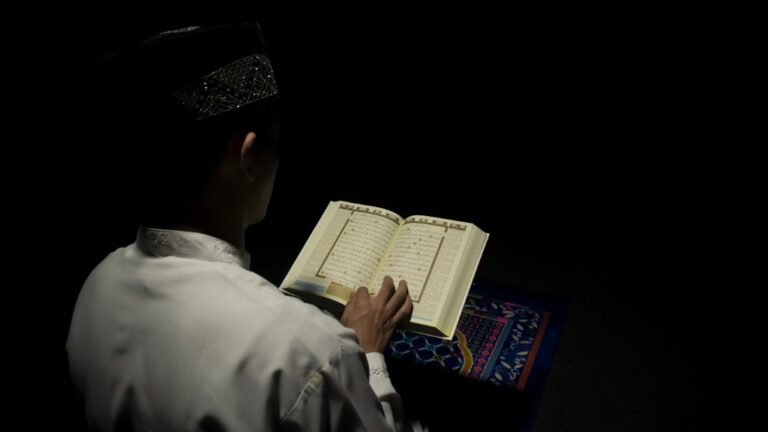
Rabbi, Do not purify me, Verdun, and you are the best of inheritors: meaning, importance, and benefits

Oh God, there is no easy medicine: meaning and benefits

Powered by Aladhan API - All rights reserved.
Shortening and Combining Prayers While Travelling (Qasr Salat)
Posted by Ahmed Abdulla | Prayer

In this article we will cover the topic which confuses many Muslims known as Qasr Salat (Salat during travel). People often ask, what is the ruling on shortening the Salah when travelling? What are the conditions and how many rakats should I pray? What if I am gone for an extended period of time, how long can I offer the shortened prayer for?
It is certainly acceptable that the salah, specifically the fardh rakats of Zuhr, Asr, and Isha are reduced from four rakats to two rakats. The shortening of prayers is mentioned both in the Quran and is a confirmed Sunnah of Prophet Muhammad (ﷺ).
In Surah An Nisa , ayah 101 it says,
وَإِذَا ضَرَبْتُمْ فِى ٱلْأَرْضِ فَلَيْسَ عَلَيْكُمْ جُنَاحٌ أَن تَقْصُرُوا۟ مِنَ ٱلصَّلَوٰةِ إِنْ خِفْتُمْ أَن يَفْتِنَكُمُ ٱلَّذِينَ كَفَرُوٓا۟ ۚ إِنَّ ٱلْكَٰفِرِينَ كَانُوا۟ لَكُمْ عَدُوًّا مُّبِينًا Transliteration : Wa izaa darabtum fil ardi falaisa ‘alaikum junaahun an taqsuroo minas Salaati in khiftum ai yaftinakumul lazeena kafarooo; innal kaafireena kaanoo lakum aduwwam mubeenaa Translation : And when you travel throughout the land, there is no blame upon you for shortening the prayer, if you fear that those who disbelieve may disrupt [or attack] you. Indeed, the disbelievers are ever to you a clear enemy.
The Hanafi view is since there’s evidence that Rasulullah always prayed Qasr Salat while travelling it is considered Sunnah al-mu’akkadah. [1,2,3] There is no mention of him ever praying in full while travelling. Sunnah Mu’akkadah is the sunnah which should be followed, a person who abandons them is considered blameworthy.
If you read the ayat in Surah An-Nisa you may believe that it made reference to shortening the salat only when travelling and there is a threat or danger to your life which is why it would be permissible for you to curtail your worship. But what if you travel and there’s no danger?
This question was asked of Prophet Muhammad and he responded, “This is a favor from Allah (SWT) to you, so accept His favor.” [4]

How Far Does One Have To Travel To Pray Shortened Prayer?
There is no hadith or mention in the Quran on how far one must travel that specifies the need for Qasr Salat. The jurists argue, the minimum required distance should approximately 55 miles (around 88.7km). This is around four burud (an antiquated unit of distance representing two days of travel with a Camel).
The shortening of the prayer can also commence once he has left his village or city.
How Many Days Can You Offer the Shortened Salah?
There is a difference of opinion as to how many days you can pray the shortened salah as this is not specified in the hadith. According to the Hanafi Fiqh, it’s permissible for a Muslim to pray shortened prayer if he plans to stay less than 15 days. Beyond 15 days he is believed to be a resident and should offer the regular fardh rakats.
If he planned on staying less than 15 days but due to some unforeseen circumstance, for example delays or flight cancellations, he should keep Qasr salat as long as conditions haven’t changed and he is not able to return home. This can last days, weeks or even years as long as it is out of the traveller’s control.
Praying In Congregation
It is still recommended that the traveller should pray in congregation. If he attends a local masjid he must follow the imam and offer the full salat. If he is elected to lead the congregation with local residents he can offer the shortened prayer but should advise the followers so they make the proper niyyah that they will be offering the shortened prayer with the Imam.
On Combining the Prayers
Most jurists are in agreement that the person travelling can combine the prayers. Specificially, Zuhr and Asr can be combined and Maghrib and Isha can be combined. [5,6]
There are two options when combining the prayers, you can either advance Asr and pray at the time of Zuhr or pray Zuhr delayed at the time of Asr. Same for Maghrib and Isha. The only prayer you can not combine if Fajr with Zuhr or Isha with Fajr.
References:
[1] It was narrated that ‘Umar said: “The prayer while traveling is two Rak’ah, and Friday is two Rak’ah, and ‘Eid is two Rak’ah. They are complete and are not shortened, as told by Muhammad (ﷺ).” Sunan Ibn Majah Grade: Sahih (Darussalam)
[2] Narrated Anas: We stayed (in Mecca) for ten days along with the Prophet (ﷺ) and used to offer shortened prayers (i.e. journey prayers). Sahih Al-Bukhari
[3] Narrated Ibn Abbas: The Prophet (ﷺ) once stayed for nineteen days and prayed shortened prayers. So when we travel led (and stayed) for nineteen days, we used to shorten the prayer but if we traveled (and stayed) for a longer period we used to offer the full prayer. Sahih Al-Bukhari
[4] It was narrated that Ya’la bin Umayyah said: “I said to ‘Umar bin Al-Khattab: ‘There is no sin on you if you shorten salah and if you fear that the disbelievers may put you in trial (attack you). But now the people are safe.’ ‘Umar said: ‘I wondered the same thing, so I asked the Messenger of Allah (ﷺ) about that and he said: This is a favor from Allah (SWT) to you, so accept His favor.” Grade: Sahih (Darussalam) Sunan an-Nasa’i
[5] It was narrated from Ibn ‘Umar that if the Messenger of Allah (ﷺ) was in a hurry to travel, he would combine Maghrib and ‘Isha’. Sunan An Nasai Grade: Sahih (Darussalam)
[6] It was narrated from Mu’adh bin Jabal that the Prophet (ﷺ) combined the Zuhr and ‘Asr, and the Maghrib and ‘Isha’ when traveling during the campaign of Tabuk. Sunan Ibn Majah Grade: Sahih (Darussalam)
Related Posts

Learn Attahiyat Full Dua (Attahiyat lillahi wa salawatu)
March 17, 2020

how many rakats in jummah prayer? (sunnah prayer Before and After jummah)
March 28, 2020

Hayya Alal Falah Meaning and Response During Adhan
April 5, 2020

Subhana Rabbiyal Azeem and Subhana Rabbi Al Ala
December 31, 2019
13 Comments
Assalamu alaykum wa rahmatullah. The question i have is how many rak’ats are we to do when joining Zuhr and Asr or Maghrib and Isha? Are we to pray them as one single prayer or separate? Jazakallahu khairan.
No you should pray separate
Can I pray ( sitting position) while traveling.
Salam alikom! My question is a bit off topic but if I am on the train traveling home from school, and the distance is approxemetly 30-40 km. If at that moment I have to pray because of the time running out. Should I pray the sunnah or not? Jazakalla khairan
Aoa. If I visit my uncle in another city with my family for less than 15 days, then what is the ruling on qasr prayer? I mean I visit my uncle just to enjoy the holidays(like we do shopping, picnic and even go for medical check-up during these days). Should we offer qasr or complete prayer?
Salaam, I travel to work ~135 KM daily . Will the Qasr apply for prayers during the day?
If i stay in hotel more than one week or two weeks should i concerned my self in safar in this case i can pray less rakat
What if my zuhr asr time gets qaza Can I offer the same Jammu qasr after the time or should I pray zuhr and asr seperately?
Salaam. as far as i can gather, there is no clear cut answers from our experts. some say 10 days others 19 days out of your city. the last mentioned is more acceptable to me , but i am no expert. if you cannot stand in prayer then sit when travelling. If some one can be more specific in answering, some AL hadith WOULD SUFFICE. JazakAllahkir.
Assalaam Alaikum, Can I combine Isha with Fajr?
Hi, what about if someone got sick, is there a hadith talking about praying only 2 rakats instead of 4
Asalam alaykum warahmatullah wabarakatuh…. if travelling and you see that the dhuhr and asr prayers will be performed mid journey, is it advisable to pray the shortened prayer just after fajr salat before commencing the journey??? Jazakhallahu khair…
Salam alaikum, please I have two questions. 1. I traveled to a place and could not get a place to pray till I return back home .It’s a same day trip . When I get home will I pray all my salat in full or will it be shortened . 2. Is there a reward for praying kasar e.g I traveled to my friend’s place and planned to stay for 2 days. If I have to pray kasar is there a reward for that or can I choose to pray my salat in full .
Leave a reply Cancel reply
Your email address will not be published. Required fields are marked *
Support the site?
“Take on only as much as you can do of good deeds, for the best of deeds is that which is done consistently, even if it is little.” – Sunan Ibn Majah 4240
Need more info? Read our 2023 Annual Report
- Dua & Dhikr
- Prophets Stories
- Prayer Time
How to pray Isha Prayer
The Isha prayer is the fifth and final of Islam's five daily prayers (Salah). The term "Isha" in Arabic means "night," thus, this prayer is performed during the night time after the twilight has faded.
The Isha prayer consists of four Fard (obligatory) rakats, four Sunnah (recommended, but not compulsory) rakats at the beginning, two Sunnah rakats after the Fard rakats, and then three optional Witr rakats.
Isha’s prayer begins when the twilight after sunset has completely disappeared, the sky is completely dark, and the stars have appeared, and lasts until the middle of the night (halfway between sunset and sunrise). In some schools of thought, the time for Isha extends until the time for Fajr (the pre-dawn prayer) begins.
As with all prayers in Islam, the Isha prayer is a means of strengthening and maintaining a direct line of communication between the believer and Allah and serves as a way to seek His guidance, ask for His forgiveness, express gratitude to Him, and remember Him amidst the routine of daily life.
The Isha prayer consists of four Fard (obligatory) rakats, four Sunnah (recommended but not compulsory) rakats, and three Witr rakats. Here is a simplified step-by-step guide on how to perform the Isha prayer:
Start with Four Sunnah Rakats: These are non-compulsory but highly recommended. The procedure is the same as any other prayer: Stand to pray, perform the Takbeer, recite Surah Al-Fatiha and another Surah, and Perform the Ruku (bowing) and Sujood (prostration) as usual. Complete your prayer with Tashahhud, Salutations, and Tasleem.
2. Four Fard Rakats: The procedure is the same as the Sunnah Rakats, but these are obligatory. Recite Surah Al-Fatiha and another Surah in the first two Rakats and only Surah Al-Fatiha in the last two. Remember to sit for Tashahhud after the second Rakat, then stand for the third and fourth Rakats.
3. Two Sunnah Rakats after Fard: These are also non-compulsory but highly recommended. The procedure is the same as for the first two Sunnah Rakats.
4. Three Witr Rakats: Begin intending to perform the Witr prayer, then complete the Takbeer. Recite Surah Al-Fatiha and another Surah. After this, perform the Ruku and two Sujood as usual. Stand up for the second Rakat, recite Surah Al-Fatiha and another Surah, then perform Ruku and two Sujood again. Stand up for the third Rakat, recite Surah Al-Fatiha and another Surah. After this, say "Allahu Akbar," but instead of going into Ruku, raise your hands to your ears, fold your right hand over your left hand, then recite Du'a-e-Qunoot (a special supplication). After the supplication, perform Ruku and Sujood as usual. Finally, sit for Tashahhud, Salutations, and end your prayer with Tasleem.
This is a simplified guide, and there might be slight variations in how Muslims perform the Isha prayer depending on their school of thought (Madhab) within Islam. It's always a good idea to consult with a local religious scholar if you're unsure about the specific procedures for prayer in your tradition.
Like all of the five daily prayers in Islam, the Isha prayer provides multiple spiritual, psychological, and physical benefits. Here are some of the benefits of performing the Isha prayer:
1. Fulfilling Allah's Command: Muslims fulfill a divine commandment by performing the Isha prayer and completing their five daily prayers, one of Islam's Five Pillars.
2. Nightly Reflection: The Isha prayer offers a moment of quiet reflection and spirituality at the end of the day. It's a time to contemplate the day's events, seek forgiveness for any wrongs committed, and make improvement plans.
3. Spiritual Connection: Like other prayers, the Isha prayer helps to foster a strong spiritual connection with Allah. This connection is vital for maintaining faith and a sense of purpose in life.
4. “Whoever offers Isha salah in jama’ah it is as though he spent half the night in worship. And whoever offers fajr salah in jama’ah it is as though he spent the entire night in worship.” (Jami` at-Tirmidhi 221)
5. If you offer Isha prayer, Allah will reward you for a half-night worshiping Allah. It is a great blessing for you. So, make sure never to miss the Isha prayer.
6. Try to make more dua’s after the Isha prayer; Allah listens to dua’s and will shower His blessings on you.
7. If you pray before sleep, you have a more peaceful night. So, try to offer Isha prayer regularly.
8. Promotes Discipline: Regular prayer, including the Isha prayer, instills discipline, punctuality, and time-management skills.
9. Physical Movement: The physical postures in the Isha prayer contribute to a form of moderate exercise and helps to maintain flexibility and posture.
10. Promoting Peace and Tranquility: The Isha prayer, performed just before sleep, can bring peace and tranquility. It can help clear the mind, alleviate stress and anxiety, and prepare one for a good night's sleep.
11. Reward from Allah: According to Hadiths (sayings and actions of Prophet Muhammad, peace be upon him), praying Isha in the congregation multiplies the rewards.
12. Social Benefits: If performed in a mosque, the Isha prayer provides a chance for community gathering and social interaction, fostering a sense of unity and brotherhood among Muslims.
13. Moral and Ethical Reminder: Praying constantly reminds us of our moral and ethical responsibilities as Muslims.
Remember, the primary purpose of any prayer in Islam, including Isha, is the worship of Allah. All other benefits, while important, are secondary to this main objective.
The Isha prayer is the last of the five daily prayers in the Islamic day, and its time begins when the red twilight (the redness left in the sky after the sun sets) disappears. This is usually when the sky is completely dark, and the stars are clearly visible, marking the beginning of the night.
The ending time for the Isha prayer is before the Fajr prayer, the pre-dawn prayer. In other words, you can pray Isha anytime throughout the night, up until just before the break of dawn.
However, according to some Islamic scholars and schools of thought, it is preferable to pray Isha before midnight (midnight here refers to the halfway point between sunset and the next sunrise, not necessarily 12:00 on the clock).
As always, the exact timing for the Isha prayer may vary based on your geographic location and the specific time of year. It's recommended to use a reliable prayer timetable or Islamic app that considers these factors to provide accurate prayer times.
The Isha prayer consists of 17 total units (rak'ahs) that can be divided into several categories:
1. Four Sunnah Rak'ahs (non-compulsory): These are performed before the obligatory part of the prayer. They are recommended but not compulsory.
2. Four Fard (obligatory) Rak'ahs: These are the mandatory part of the prayer that every adult Muslim must perform.
3. Two Sunnah Rak'ahs (non-compulsory): These are performed immediately after the obligatory part of the prayer.
4. Two Nafl (voluntary) Rak'ahs: These are additional voluntary rak'ahs that can be performed after the Sunnah rak'ahs.
5. Three Witr Rak'ahs: The Witr prayer is usually performed after the Nafl rak'ahs and is considered highly recommended, carrying a special significance.
6. Two Nafl Rak'ahs (voluntary): Additional rak’ahs can be performed after the Witr prayer.
While only the four Fard Rak'ahs are strictly compulsory, the additional Sunnah and Nafl prayers are highly recommended and add to a believer's reward.
Please note that there can be slight variations in the number of rak'ahs based on different schools of thought within Islam. It's always a good idea to consult with a local religious scholar or trusted religious source if you're unsure about the specific practices within your tradition.
Related Posts
Leave a comment.
Your email address will not be published. Required fields are marked *

Recent Posts

How To Pray Salat Al-Duha?
Salat Al-Duha: Salat al-Duha, also known as Duha prayer, is a voluntary Isla...
Sun 06, 2023

How to Pray Eid Salah (Namaz)?
Eid Prayer: The Eid prayer is a special prayer that Muslims perform to mark...

How to pray Salat al-Janazah?
Salat al-Janazah: Salat al-Janazah, also known as the funeral prayer, is a p...
Popular Posts

- Albalagh.net
- AnswersToFatawa
- Arij Canada
- Askimam.org
- Askmufti.co.za
- AskOurImam.com
- CouncilofUlama.co.za
- Darulfiqh.com
- Darulifta Azaadville
- Darulifta Deoband Waqf
- Darulifta-Deoband.com
- Daruliftaa.com
- DaruliftaaMW.com
- DaruliftaaZambia.com
- DarulIftaBirmingham
- Darulihsan.com
- DarulUloomTT.net
- Fatwa-TT.com
- Fatwa.org.au
- FatwaCentre.org
- HadithAnswers.com
- IslamicPortal.co.uk
- IslamicSolutions.org
- Jamia Binoria
- Mahmoodiyah
- Mathabah.org
- Muftionline.co.za
- Muftisays.com
- MuslimaCoaching.com
- Seekersguidance.org
- ShariahBoard.org
- Tafseer Raheemi
- TheMufti.com
- ZamzamAcademy.com
- BinBayyah.net
- Darul Iftaa Jordan
- Shafiifiqh.com
- HanbaliDisciples.com
- TheHanbaliMadhhab.com
- Ask Question
- Lailatul Qadr

Home » Hanafi Fiqh » Qibla.com » Qasr Namaz – How to pray when traveling?
Related Q&A
- Paying Huffaz for leading Taraweeh.
- Is namaz valid if small children come in front of the imam in a masjid or at home?
- Can I pray namaz-e-qasr when visiting my home town every 15 days?
- Can 4 Muslims perform Jumma Namaz without an Arabic kuthbah and with a local/understandable English language?
- 1) Is it a major sin(gunah-e-kabeera) to cut the beard before a fist length?
- Which masjid should I pray in according to Hanafi madhab: Masjid1 with Shafi Imam and Sunnah beard, or Masjid2 with Hanafi Imam and no Sunnah beard?
Qasr Namaz – How to pray when traveling?
Answered by Shaykh Abu Usamah
I am on government duty at a district of about 220 kms from my home. I usually go on duty for 13 days than come home. The government has not provided me a house, nor I have rented. As per my home’s neighboring masjid’s imam’s order, I have to offer kasar salat for zohar, asar & isha. Now the imam of the local masjid at the place of my duty has ordered this practice invalid. What should I do in this matter? Please give me guidance.

Al-Salam `alaykum
Respected brother
You will have to offer Qasr Salah (i.e. 2 rak`ahs for Zuhr, `Asr and `Isha) at your place of duty. This is because it is more than 77km from your hometown and you do not intend to stay there for 15 days or more. Thus you remain a musafir . (Shar`i traveller)
If at any time you do intend to stay there for 15 days or more then you will NOT offer Qasr Salah.
Please refer to the full details of this on the Sunni Path website.
Below you will find some more information on this from the book Anis al-Musafir .
WHO IS A MUSĀFIR ?
1. The person who sets out with the intention of eventually travelling three manzils (approx. 77 km) * is regarded as a musāfir in the Sharī‛ah .
2. The moment he comes out of the boundaries of his town or city he becomes a musāfir . Within the boundaries of his town or city, he will not be a musāfir .
If the airport is within the boundaries of the city (in the sense that the buildings of the city are linked to it without a considerable break in between) it will fall under the rule of the city and the person will not be considered a musāfir when he reaches it. If it is outside the boundaries, then upon reaching it, the person will be regarded as a musāfir .
PRINCIPLE : A person will not become a musāfir until he firmly intends to travel 77 km from the place he is in .
Thus a person who travels from place to place, intending to travel less than 77km each time, will not become a musāfir even if he travels the entire world in this way!
THE ( QASR ) SALĀH OF A MUSĀFIR
1. When a person qualifies as a musāfir according to the Sharī‛ah he is required to offer two rak‛ahs for the Fard of Zuhr , ‛Asr and ‛Ishā’ salāh . The other salāhs remain as normal.
2. More than two rak‛ahs should not be offered for the Fard of Zuhr , ‛Asr and ‛Ishā’ salāh . If a person mistakenly offered four raka‛āt for these salāhs , and he had sat down for Tashahhud (al-Tahiyyāt) in the second rak‛ah , then the first two rak‛ahs will be regarded as Fard and the other two rak‛ahs as nafl .
3. In the above case he will have to make sajdah al-sahw . If he did not make sajdah al-sahw then he must repeat the salāh if its time still remains.
4. If he did not sit in the second rak‛ah then all four raka‛āt will become nafl and he will have to repeat his Fard salāh.
BECOMING A MUQĪM (RESIDENT)
1. A person will remain a musāfir and will continue offering two rak‛ahs for the four- raka‛āt salāhs until he makes the definite intention of staying at a place for fifteen days or more.
2. The place where he makes this intention is known as his Watan al-Iqāmah . He must offer four raka‛āt salāh here.
3. If he makes the intention of staying for 15 days whilst in salāh then he must offer this very salāh as a muqīm i.e. 4 raka‛āt .
PRINCIPLE : A musāfir will not become a muqīm until he firmly intends to stay at a place for a period of fifteen days from the time he makes this intention .
Based on the above principle consider the following two cases:
a) A person stops at a place intending to stay for two or three days. Due to circumstances every day he makes the intention of leaving the following day but he still does not leave. In this way fifteen days, twenty days, a month or even more passes, but he did not, at any point, make the firm intention of staying there for fifteen days. In this case he will remain a musāfir irrespective of how many days he stays at that place.
b) A person intends to stay at a place for ten days but after seven days he decides to extend his stay by an additional ten days (which will make his total stay twenty days.) In this case he will remain a musāfir . This is because after he had decided to stay ten more days there were thirteen days of his total stay remaining. Hence at no point did he make the intention to stay for fifteen days. In other words, fifteen days’ is considered from the time he changed his intention and not from the beginning of his stay.
4. The intention of staying fifteen days has to be for staying the full fifteen days at one place. If he makes an intention of staying for 15 days at two different places, and the distance between the two places is such that the adhān of one place cannot be heard at the other, then he will be a musāfir in both those places.
E.G. If a person intends staying for 10 days in Makkah and 5 days in Minā he will be a musāfir both in Makkah and Minā .
Thus a Hāji who arrives in Makkah less than fifteen full days before the morning of the 8th of Dhū al-Hijjah will be a musāfir .
If he arrives in Makkah fifteen days or more before the 8th then he will be a muqīm both in Makkah and Minā .
5. If in the above case (i.e. Law 4) he intends spending all the fifteen nights at one place then he will be a muqīm in that place.
6. If both places are so close that each other’s adhān can be heard, then both places will be regarded as one place. He will become a muqīm in both places by intending to stay there for 15 days.
7. After becoming a muqīm (by firmly intending to stay at a place for fifteen days) if he changes his intention and decides to leave before fifteen days then he will not become a musāfir .
*When he leaves with the intention of eventually travelling to another place that is at a distance of 77 kilometres or more then only will he become a musāfir . If that place is less than 77 kilometres away, he will not become a musāfir
This answer was indexed from Qibla.com, which used to have a repository of Islamic Q&A answered by various scholars. The website is no longer in existence. It has now been transformed into a learning portal with paid Islamic course offering under the brand of Kiflayn .
Read answers with similar topics:
Random Q&A
Question: 1. in the light of the shari’ah (islamic law) is the wife of my deceased son allowed to use any money from my deceased son’s estate prior to it being distributed amongst the other inheritors it should be also noted that my son left behind a shar’i will. 2. before my late son’s estate could be distributed amongst his heirs, his son (my grandson) passed away. in the light of the shari’ah who is entitled to his share my grandson left behind 3 sisters, 1 brother, mother, paternal grandfather and grandmother. jazakallah, paying interest on debts, advice to imaams of masaajid, sterling silver rings, is it permissible to engage in martial arts that have remnants of buddhist culture/religion, waswasa and urine , more answers….
- The Sunna Before the Friday Prayer & The Chopping Away of Islam
- Fasting: Why Stop Eating 10 Minutes Before?
- Women/men wearing rings with certain stones
- Gathering to Recite Qur’an
- Holding a second congregation in the university prayer room, is it allowed?
- Bleeding During Wudu: Can I Wipe & Continue?
Latest Q&A
- Is Makeup Allowed During Iḥrām?
- Do These Actions Formulate Disbelief?
- The Status of a Job Acquired with False Certification
- Can a Ḥanafī Resident Pray Behind a Shāfi’īe Traveller?
- Is it Permissible to Allow Wheelchairs in a Masjid?
- Is an Entry Fee at a Charity Event Considered Charity?
Indexed Websites
Privacy overview.

How To Combine Maghrib And Isha Prayer When Travelling [FAQs]
Traveling can sometimes disrupt our usual prayer routine, especially when it comes to combining Maghrib and Isha prayers. However, there are ways to manage and combine these prayers while on the road.

Table of Contents
How to Combine Maghrib and Isha Prayer
Here’s a simplified explanation of combining Maghrib prayer and Isha prayer using Jama Taqdeem and Jama Takheer:
Combining Maghrib prayer and Isha prayer with Jama Taqdeem
If you want to combine the Maghrib and Isha prayers using Jama Taqdeem, you can do it during the Maghrib prayer time. Jama Taqdeem means performing the two obligatory prayers at the beginning of their respective times.
Regular Jama Taqdeem
To combine Maghrib and Isha prayers with regular Jama Taqdeem, you perform the Maghrib prayer followed by the Isha prayer during the Maghrib prayer time. You won’t be reducing the number of rakats in either prayer.
So, for Maghrib prayer, you would still perform three rakats, and for Isha prayer, you would perform four rakats.
Jama Taqdeem Qasr
Combining Maghrib and Isha prayers with Jama Taqdeem Qasr involves performing the Maghrib prayer followed by the Isha prayer during the Maghrib prayer time, but you reduce the number of rakats in the Isha prayer.
It’s important to note that you cannot reduce the rakats in the Maghrib prayer. So, for Maghrib prayer, you would still perform three rakats, while for Isha prayer, you would perform two rakats.
Combining Maghrib prayer and Isha prayer with Jama Takheer
If you want to combine the Maghrib and Isha prayers using Jama Takheer, you can do it during the Isha prayer time. Jama Takheer means performing the two obligatory prayers at the end of their respective times.
Regular Jama Takheer:
To combine Maghrib and Isha prayers with regular Jama Takheer, you perform the Maghrib prayer followed by the Isha prayer during the Isha prayer time without reducing the number of rakats.
Jama Takheer Qasr:
Combining Maghrib and Isha prayers with Jama Takheer Qasr involves performing the Maghrib prayer followed by the Isha prayer during the Isha prayer time, but you reduce the number of rakats in the Isha prayer.
So, for Maghrib prayer, you would still perform three rakats, while for Isha prayer, you would perform two rakats.
Remember, these combinations are specific practices within certain interpretations of Islamic jurisprudence. It’s always best to consult with a knowledgeable scholar or refer to reliable sources for guidance on prayer practices.
When to Combine Maghrib and Isha Prayer
You can combine prayers in the following cases:
- When you’re traveling and allowed to shorten the four-rak‘ah prayers, as long as your journey is not disliked or prohibited.
- If you’re sick and combining prayers will alleviate hardship and difficulty. This applies to women experiencing irregular bleeding (istihaadah) as well. Some scholars argued that sickness is even more challenging than travel, and they allowed combining prayers after sunset.
- For breastfeeding women, as dealing with impurity (najaasah) repeatedly for each prayer can be inconvenient. They are treated similarly to the sick.
- When you’re unable to perform ablution (wudu) with water or do tayammum (dry ablution) for every prayer. If you fall into this category, you can combine prayers like travelers and the sick.
- If you’re unable to determine the prayer time, such as being blind or in an underground location, as mentioned by Imam Ahmad.
- When you’re experiencing istihaadah (irregular bleeding) or similar conditions like urinary incontinence or constant nosebleeds. This is based on a hadith where the Prophet (blessings and peace be upon him) advised combining prayers for Hamnah. Those with urinary incontinence or similar issues can also combine prayers.
7 and 8. If you have valid reasons or excuses that permit you to skip Friday prayer and congregational prayers, such as fearing for your life or wealth.
For more information, always best to consult with a knowledgeable scholar or refer to reliable sources and several online sources below for guidance on prayer practices.
- Life in Saudi Arabia ( lifeinsaudiarabia.net )
- Guidelines Islamic Law ( guidelinesislamiclaw.com )
- About Islam ( aboutislam.net )
- Islam Question & Answer ( islamqa.info )
- Al-feqh.com
Related Posts:
- Brunch Cafe and Grill: Halal Breakfast, Brunch, and Lunch in Sefton (Near Sydney)
- A Guide and Statistics to Climate in Sydney and the Surrounding Area
- Egg Salad: Perfectly Seasoned And Creamy, With A Delicious Crunch From The Celery And…
- Can You Cook Meat and Chips Together in Air Fryer? (Save Time and Energy)
- Sweet and Tangy Lemon Curd: A Delicious Spread for Breakfast or Dessert (FAQs)
- Air Fryer Sandwich: Crispy On The Outside, Soft And Tasty On The Inside (FAQs)
- Can A Minor Travel With Old Oci And New Passport? [FAQs]
- How to Cancel Your Travel and Leisure Magazine Subscription: FAQs
- How Do You Keep Strawberry Rhubarb Pie From Being Runny? (Tips and Tricks)
- Belles Hot Chicken for Chicken-Loving People in Sydney and Melbourne
- Halal Steak Restaurant in Brisbane (Delicious and Healthy)
- Australian Boomerang: The Most Fun and Well-Known Australian Item
- Aussie Hand Pies: A Refreshing and Unique Treat
- Vegemite: What Is It and What's Vegemite Made of?
- 7 Amazing Halal Breakfast and Cafe in Adelaide
- Best Halal Food in Cairns: What to Eat and Where
- The Benefits of Avocado for Face and Skin
- Refrigerated Avocado Turned Brown: Why and What Should We Do?
- Can I Eat Tomato And Cucumber Together?
How to Perform Salat al Isha
How to perform the four rakat sunnah part of salat al isha.
- First make the Niyyah (intention) by reciting "I intend to perform The Four Rakats Sunnah Part Of The Salat Al Isha"
- You say takbir "Allahu Akbar" This starts the prayer.
- Begin reciting "Subhanaka"
- After you say: "Audhu billahi min-ash-shayta -nir-rajeem Bismillah-ir-Rahman-ir-raheem"
- Reciting Surah Al-Fatiha
- Another portion (Surah) of the Qur'an .
- Go into Ruku (the bowing position) and You say "Subahaana Rabbiyal Azeem"
- Stand up straight when you says "Sami Allahu liman Hamidah", and say "Rabbana lakal Hamd" in a low voice.
- Go into the 1st Sajdah and You say "Subahaana Rabbiyal Aa'la"
- Now sit-up from the first Sajdah in jalsa position (Sitting position between the two Sajdahs)
- Now go into the 2nd Sajdah and You say "Subahaana Rabbiyal Aa'la"
- Rise up to proceed to the next raka'at,
- You say "Bismillah-ir-Rahman-ir-raheem"
- After this, you sit for Tashshahud: You recite just At-tahiyyat, Allah-umma salli, Allah-umma Barik and Rabbana
- After this, you sit for the complete Tashshahud: You recite At-tahiyyat , Allah-umma salli, Allah-umma Barik and Rabbana.
- Turning to your face to the right first and saying "Assalamu alaikum wa Rahmatullah" and then to his left and doing the same
How To Perform The Four Rakats Fard Part Of Salat Al Isha
- First make the Niyyah (intention) by reciting "I intend to perform The Four Rakats Fard Part Of The Salat Al Isha"
- After this, you sit for Tashshahud: You recite just At-tahiyyat
How To Perform The Two Rakats Final Sunnah Part Of Salat Al Isha
- First make the Niyyah (intention) by reciting "I intend to perform The Two Rakats Final Sunnah Part Of The Salat Al Isha"
How to perform salah
- ⤷ How to perform salah
- ⤷ How to Perform Salat al Jumah
- ⤷ How to perform Eid ul-Adha prayer?
- ⤷ How to Perform Salat al Maghrib
- ⤷ How to Perform Salat al Fajr
- ⤷ How to Perform Salat al Zuhr
- ⤷ How to perform Eid-ul-Fitr salat?
Call of Time
How to perform salat al jumah, how to perform salat al fajr, how to perform salat al zuhr.
- Copyright © 2005 - 2024 Namaz Zamanı
- Advertising
- Terms of Use
- PRO Courses Guides New Tech Help Pro Expert Videos About wikiHow Pro Upgrade Sign In
- EDIT Edit this Article
- EXPLORE Tech Help Pro About Us Random Article Quizzes Request a New Article Community Dashboard This Or That Game Popular Categories Arts and Entertainment Artwork Books Movies Computers and Electronics Computers Phone Skills Technology Hacks Health Men's Health Mental Health Women's Health Relationships Dating Love Relationship Issues Hobbies and Crafts Crafts Drawing Games Education & Communication Communication Skills Personal Development Studying Personal Care and Style Fashion Hair Care Personal Hygiene Youth Personal Care School Stuff Dating All Categories Arts and Entertainment Finance and Business Home and Garden Relationship Quizzes Cars & Other Vehicles Food and Entertaining Personal Care and Style Sports and Fitness Computers and Electronics Health Pets and Animals Travel Education & Communication Hobbies and Crafts Philosophy and Religion Work World Family Life Holidays and Traditions Relationships Youth
- Browse Articles
- Learn Something New
- Quizzes Hot
- This Or That Game New
- Train Your Brain
- Explore More
- Support wikiHow
- About wikiHow
- Log in / Sign up
- Philosophy and Religion
- Muslim Prayer
The Number of Rakat in the Isha Prayer & How To Properly Perform Them
Last Updated: April 2, 2024 Fact Checked
How many rakat are in Isha?
- First Rak’ah
- Second Rak’ah
- Third & Fourth Rak’ah
Optional Rakat
How many rakat are in the other daily prayers.
This article was co-authored by wikiHow staff writer, Ali Garbacz, B.A. . Ali earned her B.A. in Linguistics and Asian Languages and Cultures with a focus on East Asia from the University of Wisconsin-Madison in 2022. She has published articles centering around culture and history for non-profits and has also done news writing for an online news site. Ali now writes as an editor at wikiHow with the hopes of becoming a part in helping to achieve wikiHow’s goal of teaching everyone to do anything. She enjoys the process of researching and learning new things to share with readers and creating content that is both informative and fun. This article has been fact-checked, ensuring the accuracy of any cited facts and confirming the authority of its sources. This article has been viewed 218,705 times. Learn more...
Isha is the last of the five daily prayers in Islam, a very demonstration of faith for practicing Muslims. Isha consists of various rakat , or combinations of prayers and prostrations, some of which are optional and others which are mandatory. Keep reading to find out how many rakat there are in this final daily prayer, how to perform them, and how this number compares to the other 4 daily prayers.
Things You Should Know
- The Isha prayer has 4 mandatory rakat called Fard and 13 optional rakat called Sunnah , Nafl , and Witr .
- Perform the Fard rakat by proclaiming “Allahu Akbar” (“God is the greatest.”) and moving your body between standing, kneeling, and prostrating.
- The Sunnah , Nafl , and Witr prayers are all optional, but each has special benefits that can bring you closer to Allah.

- Sunnah Ghair mu’akkadah are “non-confirmed” Sunnah that the Prophet Muhammad only sometimes performed.
- Fard : 4 rakat
- Sunnah mu’akkadah are “confirmed” Sunnah prayers which the Prophet Muhammad always performed and never omitted. They’re still optional but more recommended than the Sunnah Ghair mu’akkadah
- Nafl are completely optional prayers that are said to draw a person closer to Allah.
- While many Muslims view Witr as a voluntary prayer, some believe that it’s obligatory to perform alongside Fard .
- You have the option to perform 1, 3, 5, 7, or 9 rakat of Witr .
- Nafl : 2 rakat
- The rakat for each type of prayer are performed with the same recitations and body movements. Some may have additional recitations depending on the prayer.
Performing the First Rak’ah

- In terms of clothing, men are required to cover the front and back of their bodies from the navel to the knees. They must also cover their shoulders. The garments they wear must be loose and not transparent.
- Women must cover their entire bodies except for their hands and faces. Their clothing must also be loose but not transparent in any way.

- This opening sequence is called the Takbir .

- In the Name of God, the Merciful, the Compassionate Praise belongs to God, Lord of the World, the Merciful, the Compassionate, Master of the Day of Judgement; We worship only You, and from You alone do we seek help. Lead us on the straight path, the path of those whom You have blessed, not of those on whom is [Your] Wrath, nor of those who have gone astray.
- In the Name of God, the Merciful, the Compassionate Say: ‘He is God, the One, God the Eternal and Besought of all, Neither begetting nor begot, Nor is there anything comparable or equal to Him.

Performing the Second Rak’ah

- I bear witness that there is no god apart from Allah, Who is unique and without partners. I also bear witness that Muhammad is His servant and His Prophet. O God, bless Muhammad and the progeny of Muhammad.
Performing the Third & Fourth Rak’ah

- Glory be to God, and praise be to God; there is no god but Allah, and Allah is Greater.

- O Allah, send Your mercy upon Muhammad and the family of Muhammad, just as You sent mercy upon Ibrahim and the family of Ibrahim. Truly You are Praiseworthy and Glorious. O Allah, send blessings upon Muhammad and the family of Muhammad, just as You sent blessings upon Ibrahim and the family of Ibrahim. Truly You are Praiseworthy and Glorious.

- Salat ul Taubah (Prayer of Repentance): This prayer usually has 2 rakat , and you should only perform it when you are looking for forgiveness for you sins.
- Salaat ul Istikhaarah (Prayer of Seeking Counsel): You perform this prayer when you’re seeking Allah’s guidance about a decision in your life. This prayer usually has 2 rakat .
- Tahajjud (Night Prayer): This Nafl can only be performed after Isha , and people pray it to gain mental strength and peace. It can have 2 to 12 rakat depending on how many you choose to perform.
- Some believe that Sunnah and Nafl prayers are the same, while others argue that Sunnah prayers are specifically those that the Prophet Muhammad did persistently.

- After reciting the Surat al-Fatiha , many recommend reciting the Surat al-A’la for during the first rak’ah , Surat al Kaafiroon for the second, and Surat al-Ikhlaas for the third.
- Allaahumma ihdinee feeman hadayta wa `aafinee feeman `aafayta wa tawallanee feeman tawallayta, wa baarik lee feemaa a`tayta, waqinee sharra maa qadayta, fa’innaka taqdee wa laa yuqdaa `alayka, innahu laa yadhillu man walayta, wa laa ya`izu man `adayta, tabaarakta rabbanaa wa ta`aalayta
- O Allah, guide me along with those whom You have guided, pardon me along with those whom You have pardoned, be an ally to me along with those whom You are an ally to and bless for me that which You have bestowed. Protect me from the evil You have decreed, for verily You decree and none can decree over You. For surety, he whom You show allegiance to is never abased and he whom You take as an enemy is never honored and mighty. O our Lord, Blessed and Exalted are You.

- Fajr : 2 rakat of Sunnah , 2 rakat of Fard
- Dhuhr : 4 rakat of Sunnah , 4 rakat of Fard , 2 rakat of Sunnah , 2 rakat of Nafl
- Asr : 4 rakat of Sunnah , 4 rakat of Fard
- Maghrib : 3 rakat of Fard , 2 rakat of Sunnah , 2 rakat of Nafl
Expert Q&A
You Might Also Like

- ↑ https://raleighmasjid.org/wp-content/uploads/2021/07/HDIP.pdf
- ↑ https://www.al-islam.org/nutshell/files/prayers.pdf
- ↑ https://www.icorlando.org/pdfs/How_to_perform_Salaah.pdf
- ↑ https://dakwah.org.my/wp-content/uploads/2020/07/Quick-guide-to-Salah.pdf
- ↑ https://www.alislam.org/library/books/Salat-The-Muslim-Prayer-Book.pdf
- ↑ https://static1.squarespace.com/static/5c9e26a35df2930001c476e3/t/60ba797f771aff02d86670d1/1622833540585/CLASS+4+-+WITR+%26+DUHA+PRAYERS.pdf
About This Article

- Send fan mail to authors
Did this article help you?

Featured Articles

Trending Articles

Watch Articles

- Terms of Use
- Privacy Policy
- Do Not Sell or Share My Info
- Not Selling Info
Don’t miss out! Sign up for
wikiHow’s newsletter

Jesus Prayer Ministry
- Types of Prayer
- Benefits of Prayer
- Advanced Prayer Techniques
- Prayer Tools
- Prayer in Different Religions
- Prayer Ministry
- About Greg & Darlene
Complete Guide on How to Pray Isha: Step-by-Step Process

- December 4, 2023
- 17 min read

The Isha prayer is the fifth and final obligatory prayer of the day. It is a four-rakat prayer, consisting of both sunnah (optional but recommended) and fard (obligatory) prayers. In this comprehensive guide, we will take you through the step-by-step process of performing the Isha prayer, including the necessary preparations, recitations, and postures.
Key Takeaways
- Performing the Isha prayer is an important part of a Muslim’s daily routine.
- Isha prayer consists of four rakats, with both sunnah and fard prayers.
- Before starting the prayer, it is necessary to perform wudu.
- Recitation of Surah Al-Fatiha and additional verses is required during the prayer.
- Postures such as ruku and sujood are performed during the Isha prayer.
Preparing for the Isha Prayer: Performing Wudu
Before starting the Isha prayer, it is important to perform wudu, or ablution. This sacred act involves purifying oneself by washing specific parts of the body with clean water. Wudu is an essential prerequisite for engaging in prayer, as it symbolizes the physical and spiritual cleansing of one’s self before standing in the presence of Allah.
Steps for Performing Wudu:
- Begin by saying “Bismillah” (In the name of Allah) to seek His blessings and protection.
- Wash both hands up to the wrists, beginning with the right hand and then the left, ensuring that water reaches every part.
- Rinse the mouth three times, using your right hand to cup the water and cleansing your mouth and throat.
- Inhale water into the nostrils and then blow it out three times.
- Wash the face three times, from the hairline to the chin and from ear to ear, ensuring that the water reaches all areas.
- Wash the right forearm, starting from the fingertips and moving up to the elbow, three times. Repeat for the left forearm.
- Wipe the head, using a moistened hand to pass over the entire head once.
- Wash the feet, starting with the right foot and moving up to the ankles, making sure to clean between the toes. Repeat for the left foot, using three washes for each foot.
Performing wudu not only physically cleanses the body but also serves as a spiritual preparation for prayer. It allows the worshipper to enter a state of purity and focus, ready to connect with Allah through the act of prayer.

Table: Key Steps of Wudu
Setting your intention for the isha prayer.
Before starting the Isha prayer, it is crucial to set your intention (niyyah) in your heart and mind. The intention serves as a reminder of your purpose and dedication to worship Allah with sincerity and devotion. By consciously focusing on your intention, you ensure that your prayers are performed for the sake of Allah alone, seeking His blessings and seeking nearness to Him.
Setting your intention for the Isha prayer involves reflecting on the significance of this act of worship and aligning your thoughts and actions accordingly. It is a moment of introspection where you reaffirm your commitment to fulfilling your religious obligations and seeking spiritual growth.
As you prepare to engage in the Isha prayer, take a few moments to center yourself and focus your mind on the purpose behind your actions. By consciously setting your intention, you infuse your prayers with meaning and elevate them from mere ritualistic motions to a genuine connection with the Divine.

The Power of Intention
Intention plays a crucial role in the spiritual journey of a Muslim. It is through the purity and sincerity of intention that our actions are elevated and transformed into acts of worship. The Prophet Muhammad (peace be upon him) emphasized the significance of intention, stating that “Verily, actions are judged by intentions.”
Therefore, as you embark on the Isha prayer, let your intention guide your every movement and recitation. Remind yourself of the countless blessings and rewards that await those who perform their prayers with sincerity. Embrace the opportunity to seek closeness to Allah and strengthen your relationship with Him through this act of worship.
Beginning the Isha Prayer: Takbir and Standing
Starting the Isha prayer is an important moment as you transition into a state of focus and devotion. It begins with the takbir, where you proclaim “Allahu Akbar” meaning “Allah is the Greatest.” This powerful declaration sets the tone for the prayer and serves as a reminder of the greatness of Allah.
After saying the takbir, you stand facing the Qiblah, the direction of the Kaaba in Mecca. This sacred direction represents the unity and oneness of Muslims worldwide. Standing with a straight back and folded hands, you prepare yourself for the next steps of the Isha prayer.
The act of standing in the Isha prayer signifies your readiness to engage in worship and connect with Allah. It is a physical manifestation of your spiritual commitment and dedication. As you stand, you leave behind the distractions of the world and turn your attention solely towards Allah.
The Importance of Standing in the Isha Prayer
“And stand before Allah, devoutly obedient” – Surah Al-Baqarah (2:238)
Standing in the Isha prayer is not only a physical posture but also a symbol of humility and surrender to Allah’s will. It is a reminder that we are in the presence of the Almighty and submit ourselves to His guidance and mercy. By standing in prayer, we acknowledge our dependence on Allah and seek His blessings and guidance in our lives.
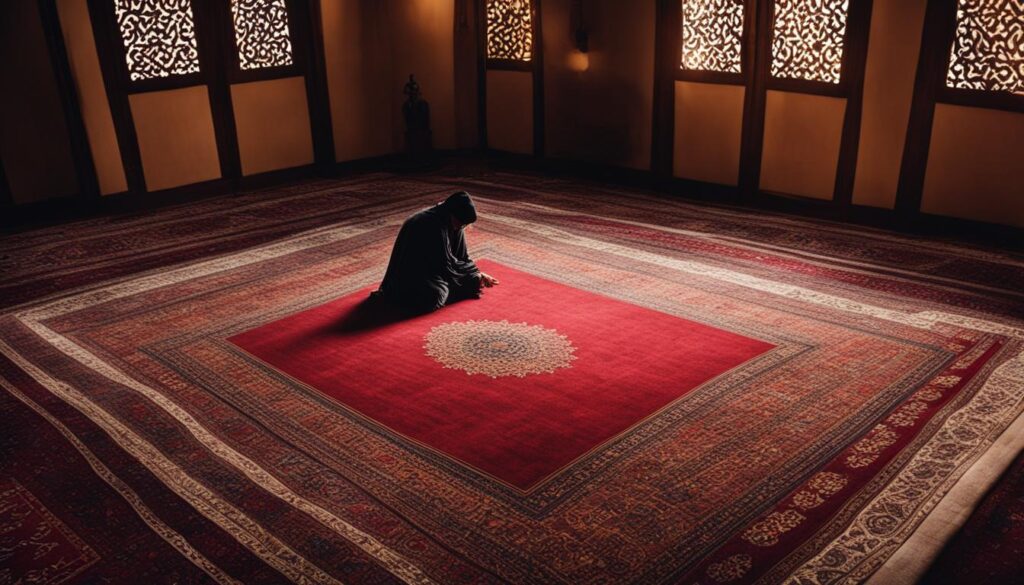
Reciting Surah Al-Fatiha and Additional Verses
Recitation is an integral part of the Isha prayer, allowing Muslims to connect with Allah and seek His guidance and blessings. In the Isha prayer, the recitation of Surah Al-Fatiha is obligatory in the first and second rakats. Surah Al-Fatiha, also known as “The Opening,” is a chapter from the Quran that holds immense significance and is recited in every unit of the prayer.
In addition to Surah Al-Fatiha, Muslims have the option to recite additional verses or chapters from the Quran in each rakat of the Isha prayer. One popular choice is Surah Al-Ikhlas, a concise yet profound chapter that emphasizes the oneness of Allah. Its recitation in the Isha prayer reinforces the belief in the unity and uniqueness of Allah.
“Say, He is Allah, [who is] One. Allah, the Eternal Refuge. He neither begets nor is born, nor is there to Him any equivalent.” – Surah Al-Ikhlas (112:1-4)
While reciting these verses, Muslims are encouraged to focus on the meanings and reflect on the message conveyed by the words of Allah. This spiritual connection through recitation enhances the overall experience of the Isha prayer, deepening one’s devotion and sense of awe in the presence of Allah.

Performing Ruku and Sujood in the Isha Prayer
The Isha prayer incorporates specific postures that help believers establish a deeper connection with Allah. These postures include ruku (bowing) and sujood (prostration), which are performed during the prayer. These physical acts of devotion demonstrate humility and submission to Allah, allowing individuals to express their gratitude and seek His blessings.
During ruku, the worshipper bows down, placing their hands on their knees while praising and glorifying Allah. This posture symbolizes surrender and acknowledgement of Allah’s greatness. It also serves as a reminder of the significance of humbling oneself before the Creator.
In sujood, the worshipper prostrates with their forehead, hands, and knees touching the ground. This position signifies complete submission to Allah’s will and seeks His mercy and forgiveness. It is a moment of intense connection, as the worshipper humbly beseeches Allah for guidance and blessings.
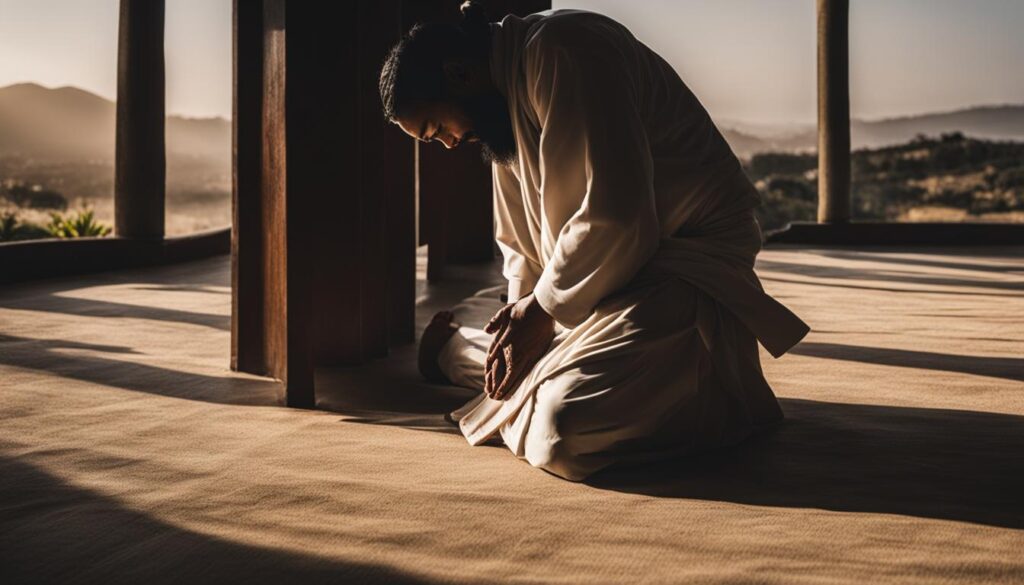
Benefits of Ruku and Sujood
The acts of ruku and sujood in the Isha prayer hold numerous spiritual and physical benefits. By bowing down and prostrating, individuals increase their focus and concentration, allowing them to disconnect from worldly distractions and connect with Allah on a deeper level. These postures also help in promoting flexibility and blood circulation, contributing to physical well-being.
Moreover, ruku and sujood are acts of obedience and display of devotion to Allah. They serve as a means of seeking forgiveness for one’s shortcomings and sins, while also demonstrating gratitude for Allah’s blessings. The humility exhibited during these postures strengthens the individual’s relationship with Allah and reinforces their commitment to the principles of Islam.
The table provides a visual summary of the key aspects of ruku and sujood in the Isha prayer. It highlights the different physical postures, the actions performed, and the symbolic meaning behind each posture.
By incorporating ruku and sujood into the Isha prayer, Muslims are reminded of their humble place in the universe and the importance of seeking Allah’s guidance and mercy. These acts of physical devotion deepen the spiritual experience and allow individuals to foster a stronger connection with their Creator.
Repeating the Rakats in the Isha Prayer
After completing the first two rakats of the Isha prayer, it is time to repeat the same actions and recitations to complete the remaining two rakats. This repetition ensures the fulfillment of the Isha prayer and strengthens the connection with Allah. Let’s take a look at the step-by-step process of repeating the rakats in the Isha prayer:
Repeating the Actions
1. After completing the second rakat, return to the standing position by saying “Allahu Akbar.”
2. Begin the third rakat by reciting Surah Al-Fatiha followed by an additional portion of the Quran, such as Surah Al-Ikhlas.
3. Perform the ruku and sujood as you did in the previous rakats, displaying reverence and submission to Allah.
Repeating the Recitations
1. Recite Surah Al-Fatiha in the third rakat, just as you did in the first and second rakats.
2. Add an additional portion of the Quran, such as Surah Al-Ikhlas, in the third rakat.
3. In the fourth and final rakat, recite Surah Al-Fatiha and another portion of the Quran.
By repeating the rakats in the Isha prayer, we establish a consistent pattern of devotion and seek Allah’s blessings. It is a time to reflect, seek forgiveness, and strengthen our spiritual connection. The repetition serves as a reminder of the importance of consistency and commitment in our worship.
Performing the Final Tashahhud and Taslim
After completing the four rakats of the Isha prayer, it is time to enter the final phase of the prayer. This phase includes the tashahhud and taslim, which are important elements of concluding the prayer with humility and gratitude.
Following the final tashahhud, the prayer concludes with the taslim, a simple yet profound gesture of peace. You should turn your head to the right and say, “Assalamu alaikum wa rahmatullah” (Peace be upon you and the mercy of Allah), and then turn your head to the left and repeat the same greeting. The taslim signifies the completion of the Isha prayer and serves as a reminder of the importance of peace and unity in our daily lives.
Benefits of Performing the Final Tashahhud and Taslim
The final tashahhud and taslim carry great significance and hold numerous benefits. By engaging in reflection and supplication during the tashahhud, you have the opportunity to seek forgiveness, express gratitude, and ask for blessings. This moment of personal connection with Allah strengthens your bond and deepens your faith.
In conclusion, the final tashahhud and taslim are important aspects of the Isha prayer. They provide an opportunity for personal reflection, supplication, and the expression of peace and unity. Through these actions, you can enhance your spiritual connection with Allah and cultivate a sense of gratitude, forgiveness, and harmony in your daily life.
Benefits and Rewards of Praying Isha
The Isha prayer holds immense benefits and rewards for those who perform it with sincerity and devotion. By engaging in this final obligatory prayer of the day, Muslims can experience spiritual upliftment, seek forgiveness, and attain closeness to Allah. Here are some of the key benefits and rewards of praying Isha :
1. Spiritual Purification:
Praying Isha offers a unique opportunity to purify the soul and seek repentance. It allows individuals to reflect on their actions throughout the day and seek forgiveness from Allah. Engaging in this prayer regularly can lead to a heightened sense of self-awareness and a stronger commitment to righteousness.
2. Connection with Allah:
Praying Isha enables Muslims to establish a deep and personal connection with Allah. By devoting time to worshiping Him, individuals can strengthen their bond with the Creator and experience a sense of solace and peace. This connection helps in finding guidance and drawing closer to Allah’s infinite mercy and blessings.
3. Completion of Daily Obligation:
Performing the Isha prayer fulfills the final obligatory act of worship for the day. By fulfilling this duty, adherents of Islam demonstrate their commitment to their faith and their willingness to submit to the will of Allah. It brings a sense of accomplishment and satisfaction, knowing that all the obligatory acts of worship for the day have been completed.
4. Balance in Spiritual Life:
Praying Isha contributes to a balanced and fulfilling spiritual life. By observing this essential prayer, individuals can maintain a consistent connection with Allah throughout the day and find solace and guidance in times of difficulties. It helps in grounding oneself and finding peace amidst the challenges of daily life.
The Isha prayer is an important aspect of a Muslim’s daily spiritual practice. By following the step-by-step process outlined in this guide, you can learn how to pray Isha with confidence and deepen your connection with Allah. The Isha prayer guide provided here offers a comprehensive overview of the necessary preparations, recitations, and postures involved in performing the Isha prayer.
What is the Isha prayer?
The Isha prayer is the fifth and final obligatory prayer of the day for Muslims.
How many rakats are there in the Isha prayer?
The Isha prayer consists of four rakats.
What is wudu?
Wudu is the process of ablution, which involves washing the hands, arms, face, and feet with clean water before starting the prayer.
What is niyyah?
Niyyah is the intention that one sets in the heart and mind before starting the prayer, focusing on seeking nearness to Allah and performing the prayer with sincerity and devotion.
How do you start the Isha prayer?
To start the Isha prayer, say the takbir (“Allahu Akbar”) and stand facing the Qiblah, the direction of the Kaaba in Mecca.
What do you recite during the Isha prayer?
The recitation of Surah Al-Fatiha is required in the first and second rakats of the Isha prayer. Additionally, you may choose to recite a portion of the Quran, such as Surah Al-Ikhlas, in each rakat.
What are the postures in the Isha prayer?
The postures in the Isha prayer include ruku (bowing) and sujood (prostration).
How do you repeat the rakats in the Isha prayer?
After completing the first two rakats, you repeat the same actions and recitations to complete the remaining two rakats.
What do you do after completing the four rakats of the Isha prayer?
After completing the four rakats of the Isha prayer, you sit in the final tashahhud and recite specific prayers, including blessings upon the Prophet Muhammad and seeking forgiveness from Allah. The prayer concludes with the taslim, a greeting of peace to the right and left.
What are the benefits of praying Isha?
Praying Isha offers benefits such as seeking closeness to Allah, attaining spiritual purification, and seeking His forgiveness.
How can I deepen my connection with Allah through the Isha prayer?
By following the step-by-step process outlined in this guide, you can confidently perform the Isha prayer and deepen your connection with Allah.
Source Links
- https://www.wikihow.com/Isha-Prayer
- https://www.namazzamani.net/how-to-perform-salah/how-to-perform-salat-al-isha.htm
- https://al-rida.net/knowledge-base/isha-night-prayer/

Father / Grandfather / Minister / Missionary / Deacon / Elder / Author / Digital Missionary / Foster Parents / Welcome to our Family
View all posts
Related Posts:

About Islam
- # Quran 382 Articles
- # Spirituality 382 Articles
- # Discovering Islam 382 Articles
- # Shariah 382 Articles
- # Videos 382 Articles
- # Family & Life 382 Articles
- # Fatwa & Counseling 382 Articles
- # Muslim News 382 Articles
- # Youth Q & A 382 Articles
- # Donate 382 Articles
- Ask the Scholar
Praying while Traveling: How?
Wa`alykum As-Salaamu Warahmatullahi Wabarakaatuh.
In the Name of Allah, Most Gracious, Most Merciful.
All praise and thanks are due to Allah, and peace and blessings be upon His Messenger.
In this fatwa:
There is general consensus among scholars that if a traveling person is determined to return as soon as his work is done and does not know when that will be, then he may continue to pray q asr as long as he is on travel.
" title="Advertise and Market to Muslims" target="_blank">Ads by Muslim Ad Network
In his response to the question you posed, Sheikh Ahmad Kutty , a senior lecturer and an Islamic scholar at the Islamic Institute of Toronto , Ontario, Canada, states:
- There is general consensus among scholars that if a traveling person is determined to return as soon as his work is done and does not know when that will be, then he may continue to pray q asr as long as he is on travel.
If, however, a person decides to settle down in a city, the moment he does so, he ceases to be a traveler, and, therefore, he must pray full.
If, on the other hand, one is determined to stay only for a few days the number of which he knows precisely, then he should pray full, according to a great number of scholars, if his stay exceeds more than four days. The Hanafi School, however, puts the number of allowable days at fifteen, while a third group of scholars put it at eighteen.
The first view seems to be the safest view to follow, as it has been based on the Prophet’s practice. According to authentic reports, he stayed in Makkah for four days, and during his stay he prayed q asr ; he had already known in advance how many days he would be staying. He is reported to have prayed qasr for eighteen and twenty days on two different occasions, when, most likely, he had no idea as regards the number of days he would be staying.
Having said this, I should rush to state that if anyone follows the position of the Hanafi School, he should not be blamed for his action, for theirs is a Fiqh – ruling based on acceptable practices of the Salaf as-Salih (pious predecessors). Since it is merely a question of differences of interpretation based on valid Ijtihad (creative exercise of reasoning), one should never make a big issue out of such differences of opinion among Imams.
- The most accurate way to count the number of days for a traveler is to consider oneself a traveler only after one has crossed the boundaries of his city of residence.
Thus, in case of people living in Toronto, if they are in a long distance journey, they will be considered travelers only after they have crossed the boundaries of GTA. The days of stay are calculated by excluding the day/days of going and returning.
- Yes, according to the vast majority of scholars and Imams, it is perfectly allowed for a traveler to combine Zhuhr and Asr , and Maghrib and Isha.
This ruling (known as Jam` ) is based on the authentic traditions which clearly state that the Prophet (peace and blessings be upon him) had combined Zhuhr and Asr as well as Maghrib and Isha on a number of occasions while traveling.
According to the Hanafi School, however, combining prayers is allowed only during Hajj while performing the rite of standing in `Arafah . At other times, they allow only what is often termed as Jam suwari (a kind of combining): By this they mean to say that you are allowed, for instance, to delay Zhuhr and pray it at the last time of Zhuhr and then pray Asr at the first time of Asr.
The majority view allowing combining of prayers as mentioned earlier has been considered to be the most authentic; it has been adopted later by many scholars belonging to Hanafi School as well.
- While combining prayers, you are allowed to make either taqdim (advancing) or ta’khir (delaying): In other words, you are allowed to advance the second prayer to the time of the first prayer.
Thus, if you are combining Zhuhr and Asr , you can first pray Zhuhr, and then advance Asr by praying immediately, or if you wish you can defer praying Zhuhr until the time of Asr and then pray Asr afterwards. The same procedure applies to combining Maghrib and Isha as well. at the time of arrives, in which case, you will first pray.
An important word of caution concerning Jam` is that there is no combining of Fajr with Zhuhr, or Asr with Maghrib, or Isha with Fajr.
It is also worth mentioning that while praying qasr during travel is highly recommended—some Imams such as Abu Hanifah even consider it as obligatory—during travel, praying Jam` is only allowed while one is actually traveling or pre-occupied with pressing circumstances. Jam` is rare, while qasr is common.
A final remark to be made is that if a person is aimlessly wandering, he is not considered a traveler and is, therefore, not allowed to make use of the allowances of qasr and Jam` .
Allah Almighty knows best.
Editor’s note: This fatwa is from Ask the Scholar’s archive and was originally published at an earlier date.
Privacy Overview
- Latest News
- Jawazat and MOI
- Driving in KSA

- Social Issues
How to pray Qasar Namaz while traveling?
Table of Contents
Muslims must offer a shortened prayer, commonly known as Qasar Namaz/Salah, while traveling if the definition of Safar is met.
- Safar = Travel.
- Prayer = Salah = Namaz.
Is Qasr optional?
Performing Qasr Salah is a requirement, not an option. If someone offers full Salah while traveling, he must perform Sajda Sahu .
Min Safar for Qasr Namaz
A person is considered to be in Safar and is obliged to offer Qasar Salah if;
- He travels over 80 kilometers or 48 miles from the border of the city he lives in.
- He is intending to stay at that place for less than 15 days .
Prophet Muhammad ﷺ stayed in Makkah for 15 days, praying each Namaz with two rak’ahs. – Sunan an-Nasa’i 1453
Never pay the full price🏷️; join the 📢 Saudi Coupon Codes group and get sales updates and discount codes in one place.
Some Hadith allow you to offer Qasar prayer even if the stay is 18 days or 19 days , but the Hanafi school has kept it to 15 days .

While traveling from Jeddah for more than 15 days stay in Madina, you are a Musafir;
- As soon as you start your journey.
- Until you reach Madina.
- Once in Madina, you are no longer a traveler.
Number Rakat for Qasr – Individually
If a person travels per the definition of Safar given above, he must offer the following number of Rakat to offer Qasar Namaz individually.
- Fajr Qasr prayer: 2 Rakat.
- Duhr Qasr Salah: 2 Rakat.
- Asr Qasr Namaz: 2 Rakat .
- Maghrib Qasr Salah: 3 Rakat.
- Isha Qasr Namaz: 2 Rakat.
- Witr when traveling is Sunnah , not Wajib.
We have given a chart below that shows the number of rakat you need to pray in each Qasar Namaz.

Qasar Namaz rules with Jamat
The rules to offer Qasr Salah with Jamat are slightly different.
- If the Imam is a resident , a traveler must offer the complete Fard prayer, i.e., 4 for Duhr.
- A traveler must offer the Qasr prayer if the Imam is also in safar .
- If the Imam is a traveler , a resident is required to offer the complete fard prayer. Once the Imam completes his Qasar Salah, the resident will stand up and complete the rest.
Combining prayer while traveling
While traveling, Muslims are also allowed to combine the following two prayers;
- Duhr and Asr.
- Maghrib and Isha.
- Can we pray Maghrib and Isha together?
It is important to note that while offering Qasr p rayer is mandatory during travel, combining prayers is optional.
How to pray Qasr Maghrib and Isha?
Praying the Qasar of Fajar, Duhr, and Asr is quite simple as you need to offer 2 Fard of Salah only in each prayer. However, the Qasr prayer of Maghrib and Isha is a bit different.
Maghrib: As shown in the namaz rakat chart above, there is no Qasr of Maghrib prayer, and therefore, you need to offer 3 fards of Salah just like a regular Maghrib prayer.
Isha: In the case of Isha prayer, you need to pray only 2 fard of Salah as Qasr. Although praying 3 Witr after Isha is a wajib act of Salah, during Qasr prayer, it becomes a Sunnah act.
For the latest updates, you can join our ✅ WhatsApp group or ☑️ Telegram Channel .
RELATED ARTICLES MORE FROM AUTHOR
How to pray salat-al-istisqa for rain, how to perform istikhara prayer, how to offer the eclipse prayers salat ul-kusuf, what is qada time for fajr, duhr, asr, maghrib & isha, can we pray maghrib and isha together, how to offer eid prayer at home – complete guide.

IMAGES
VIDEO
COMMENTS
Therefore, Almighty Allah has offered us convenience to pray Salah during the travelling. You can perform Salah while traveling by shortening the rakats from 4 to 2 of Dhuhr, Asr and Ishaa prayers, and you can also combine the dhuhr with Asr, and Maghreb with Isha. If you can not find a proper place to perform the prayer, you can pray in a ...
Number of Rakats While Travelling: Fajr - 2 Fardh. Zuhr - 2 Fardh. Asr - 2 Fardh. Maghrib - 3 Fardh. Isha - 2 Fardh. With regards to the Sunnah and Nafl salat, the travellers had the choice as to whether or not this will be offered. It is advised once the traveller has settled that he should pray the Sunnah and Nafl prayers.
With regard to joining prayers , it is permissible for a traveller to join Zhuhr and 'Asr, and Maghrib and 'Isha, at the time of the earlier or later prayer, depending on what is easiest for him. But it is better for him not to do that unless it is difficult for him to offer every prayer on time. Based on that, you can join two prayers ...
4- How to do Taqseer (shortening of Prayers): During travel, only Salah with 4 Rakat Fardh is to be shortened, i.e. Dhuhr, Asr & Isha. Travelers should offer 2 Rakat instead of 4 Rakat of the mentioned Salahs. However, 2 Rakat Fardh of Fajr and 3 Rakat of Maghrib Salah must be offered in full as you cannot cut 2 or 3 Rakat Fardh Salah in half.
The scholars of the Permanent Committee for Ifta' said: "When joining prayers together , it is obligatory to do them in the correct order, so that [the traveller] prays Thuhr first, then prays `Asr , and he prays Maghrib first, then prays `Isha' , whether he is joining them together at the time of the earlier or later prayer."
In this fatwa: It is permissible for a traveling person to combine two Prayers. One may combine Zhuhr and `Asr together and Maghrib and `Isha' together, either by offering the second at the time of the first or by delaying the first to the time of the second. Ads by Muslim Ad Network. In his response to your question, Sheikh Ahmad Kutty, a ...
Lower yourself to the floor with your nose and forehead touching the prayer mat (a position known as "sujud") and say "Allahu Akbar" 3 times. Then say, "Subhaana rabbiyal 'alaa" ("Glory be to my Lord Most High"). [6] Keep your palms flat on the floor, knees together, and feet upright with your toes touching the floor. 4.
5 Things to Remember When Performing Salah While Traveling. Here are five things you can do to perform a prayer when on a journey and can't find a suitable place or time to pray. 1. Reducing the Number of Rakats. When traveling, Muslims can shorten their Salah from the usual four Rak'ahs to two Rak'ahs for the Dhuhr, Asr, and Isha prayers.
Table of contents How to perform Isha Prayer: Discover the Ultimate Guide to Perfecting Your Isha Prayer! Understanding Isha Prayer Steps to Perform Isha Prayer Executing the Four Rak'aats Fard Part Intention and Dua of Istiftah: Surah Fatiha Bowing (Ruku) and Qawmah (Rising from bowing) Prostration (Sajda) Jalsa (sitting between two prostrations) Reciting Tashahud in [ …]
Animated video with full transliteration and translation on the method of performing the 'Isha Prayer, according to the Islamic Shi'a Ithna Ashari teachings....
The schools concur that the shortening (qasr) of prayers during travel is limited to the obligatory four-rak'ah prayers.Hence zuhr, 'asr and 'isha' prayers will be performed in two rak'ahs, like the morning prayer.The schools differ as to whether qasr is obligatory during travel or if there is an option between it and complete salat?. The Hanafis and the Imamis observe: It is obligatory and ...
Same for Maghrib and Isha. The only prayer you can not combine if Fajr with Zuhr or Isha with Fajr. References: [1] It was narrated that 'Umar said: "The prayer while traveling is two Rak'ah, and Friday is two Rak'ah, and 'Eid is two Rak'ah. They are complete and are not shortened, as told by Muhammad (ﷺ)."
1. Fulfilling Allah's Command: Muslims fulfill a divine commandment by performing the Isha prayer and completing their five daily prayers, one of Islam's Five Pillars. 2. Nightly Reflection: The Isha prayer offers a moment of quiet reflection and spirituality at the end of the day.
THE (QASR) SALĀH OF A MUSĀFIR. 1. When a person qualifies as a musāfir according to the Sharī‛ah he is required to offer two rak‛ahs for the Fard of Zuhr, ‛Asr and ‛Ishā' salāh. The other salāhs remain as normal. 2. More than two rak‛ahs should not be offered for the Fard of Zuhr, ‛Asr and ‛Ishā' salāh.
To combine Maghrib and Isha prayers with regular Jama Taqdeem, you perform the Maghrib prayer followed by the Isha prayer during the Maghrib prayer time. You won't be reducing the number of rakats in either prayer. So, for Maghrib prayer, you would still perform three rakats, and for Isha prayer, you would perform four rakats.
1. Rakat. First make the Niyyah (intention) by reciting "I intend to perform The Four Rakats Sunnah Part Of The Salat Al Isha". You say takbir "Allahu Akbar" This starts the prayer. Begin reciting "Subhanaka". After you say: "Audhu billahi min-ash-shayta -nir-rajeem Bismillah-ir-Rahman-ir-raheem". Reciting Surah Al-Fatiha.
Prayers of a Traveler (Musafir) In Arabic, the word safar means to walk, to travel to any distance. In fiqh (religious terminology), it means to set off with the intention of walking a distance of at least 3 days. A person who sets off with such an intention is called a musafir or safari (traveler). The opposite of safar is iqamah.
How to Pray Qasar Salah: Allah (SWT) says in Surah 4, Ayah 101: "And when you travel in the land, there is no sin on you if you shorten your prayer….". It means that while traveling and while one is a certain distance away from one's hometown, one can shorten four Rakat fard prayers (Dohr, Asr, and Isha) to two Rakat prayers. It is a ...
There are 4 mandatory and 13 optional rakat in the Isha prayer. Isha is one of the five daily prayers (salat) Muslims perform.Each prayer consists of certain repetitive cycles of prayers, bows, and prostrations known as rakat.The Isha prayer is performed after twilight but before midnight, and it consists of 4 mandatory rakat known as Fard and 13 optional rakat called Sunnah, Nafl, and Witr.
Wash the face three times, from the hairline to the chin and from ear to ear, ensuring that the water reaches all areas. Wash the right forearm, starting from the fingertips and moving up to the elbow, three times. Repeat for the left forearm. Wipe the head, using a moistened hand to pass over the entire head once.
Yes, according to the vast majority of scholars and Imams, it is perfectly allowed for a traveler to combine Zhuhr and Asr , and Maghrib and Isha. This ruling (known as Jam`) is based on the authentic traditions which clearly state that the Prophet (peace and blessings be upon him) had combined Zhuhr and Asr as well as Maghrib and Isha on a ...
How to pray salah Isha 4 Rakat (units) - Step by Step Guide Please Subscribe and Share @adam-islam Easy and Simple way to teach how to pray (Salah Isha).Th...
If a person travels per the definition of Safar given above, he must offer the following number of Rakat to offer Qasar Namaz individually. Fajr Qasr prayer: 2 Rakat. Duhr Qasr Salah: 2 Rakat. Asr Qasr Namaz: 2 Rakat. Maghrib Qasr Salah: 3 Rakat. Isha Qasr Namaz: 2 Rakat. Witr when traveling is Sunnah, not Wajib.